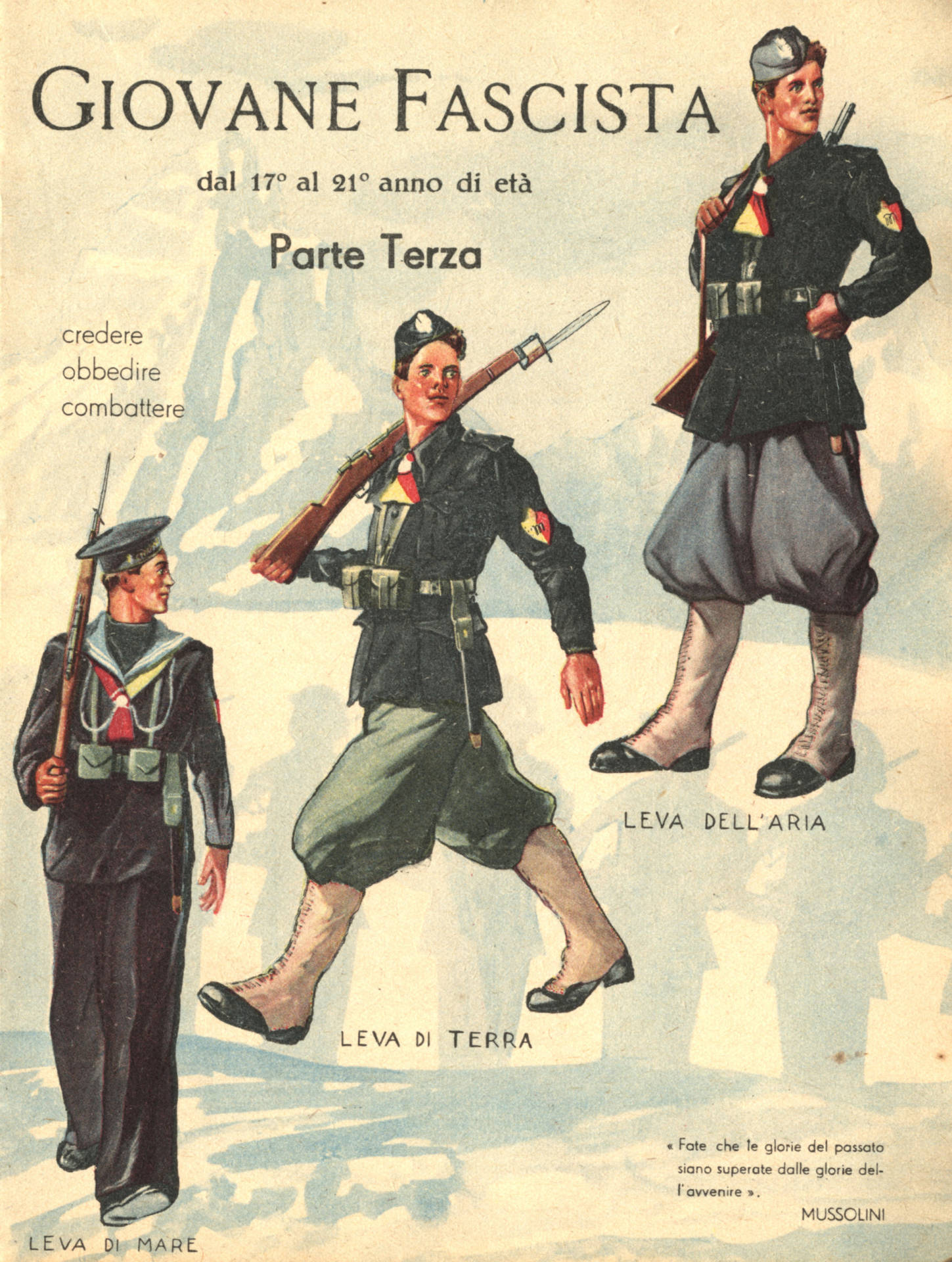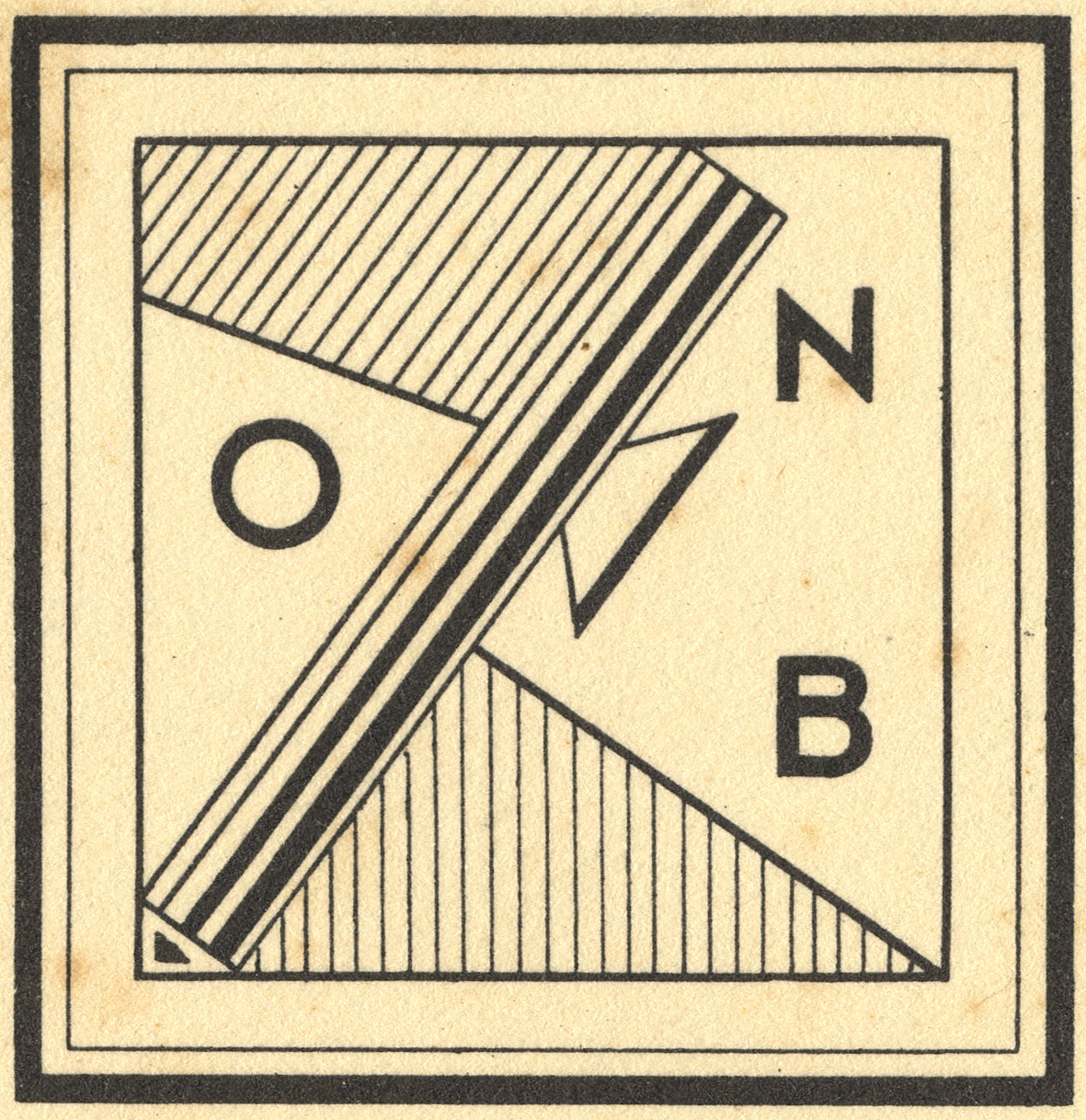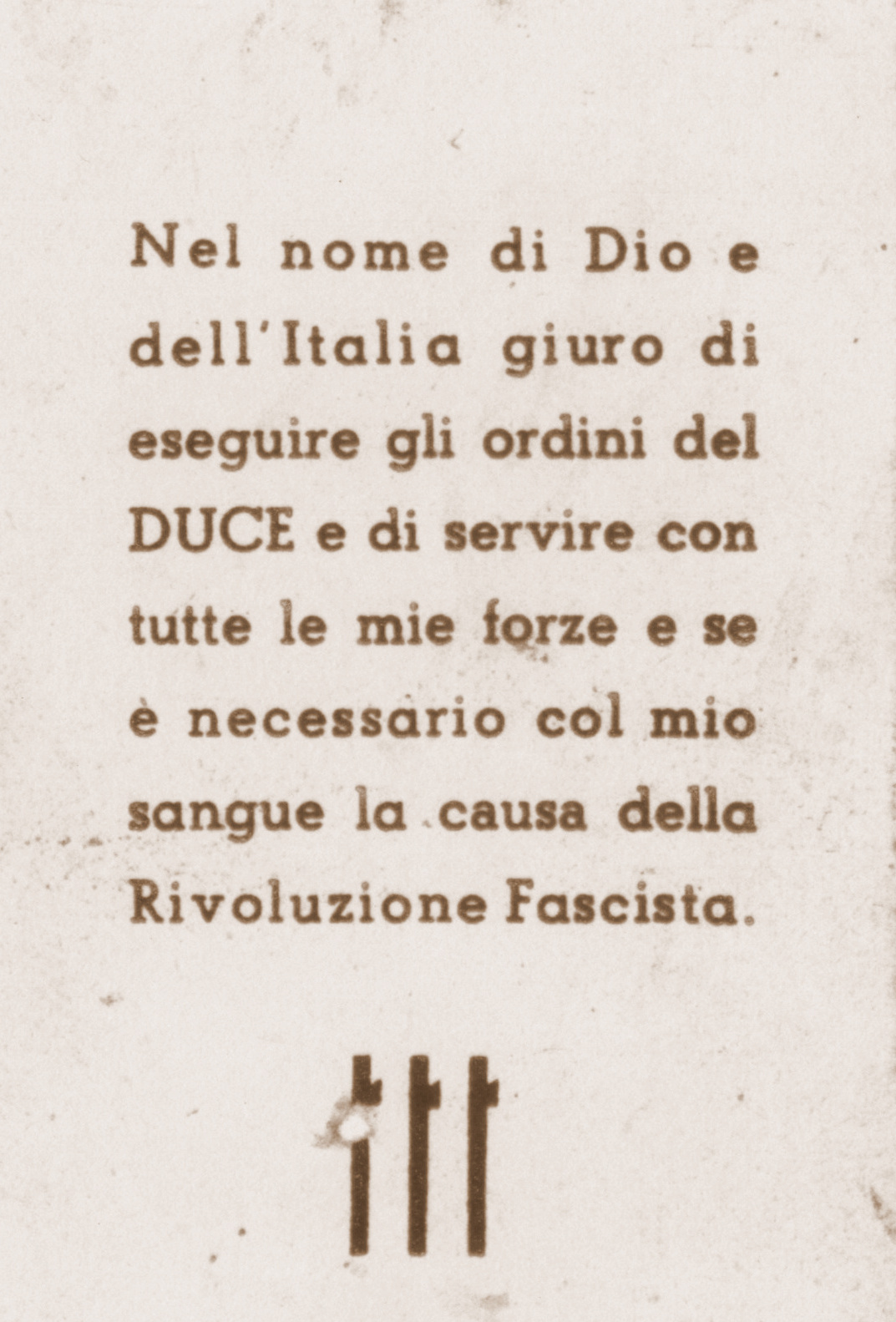Lega Nazionale
The Lega Nazionale (“National League”) was established in 1891 as the successor of the Pro Patria organisation that had been abolished in 1886. Its stated aim was to cultivate Italian language and culture in ethnically mixed areas via schools, nurseries, travelling libraries, and so on. In some places the Lega opened Italian schools alongside Slovene schools or created Italian classes in existing schools. Elsewhere it merely oversaw the introduction of Italian as a second language in schools. By 1914 the Lega was running 76 schools and nurseries across the territory.
The institutions of the Lega Nazionale had a nationalising effect on Slovene and Croatian children. This was particularly the case in the Fascist period, when they were given the additional task of Italianising the newly annexed areas.

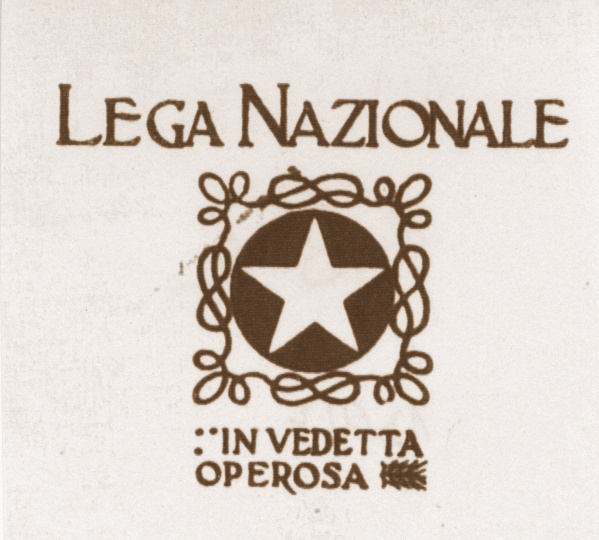
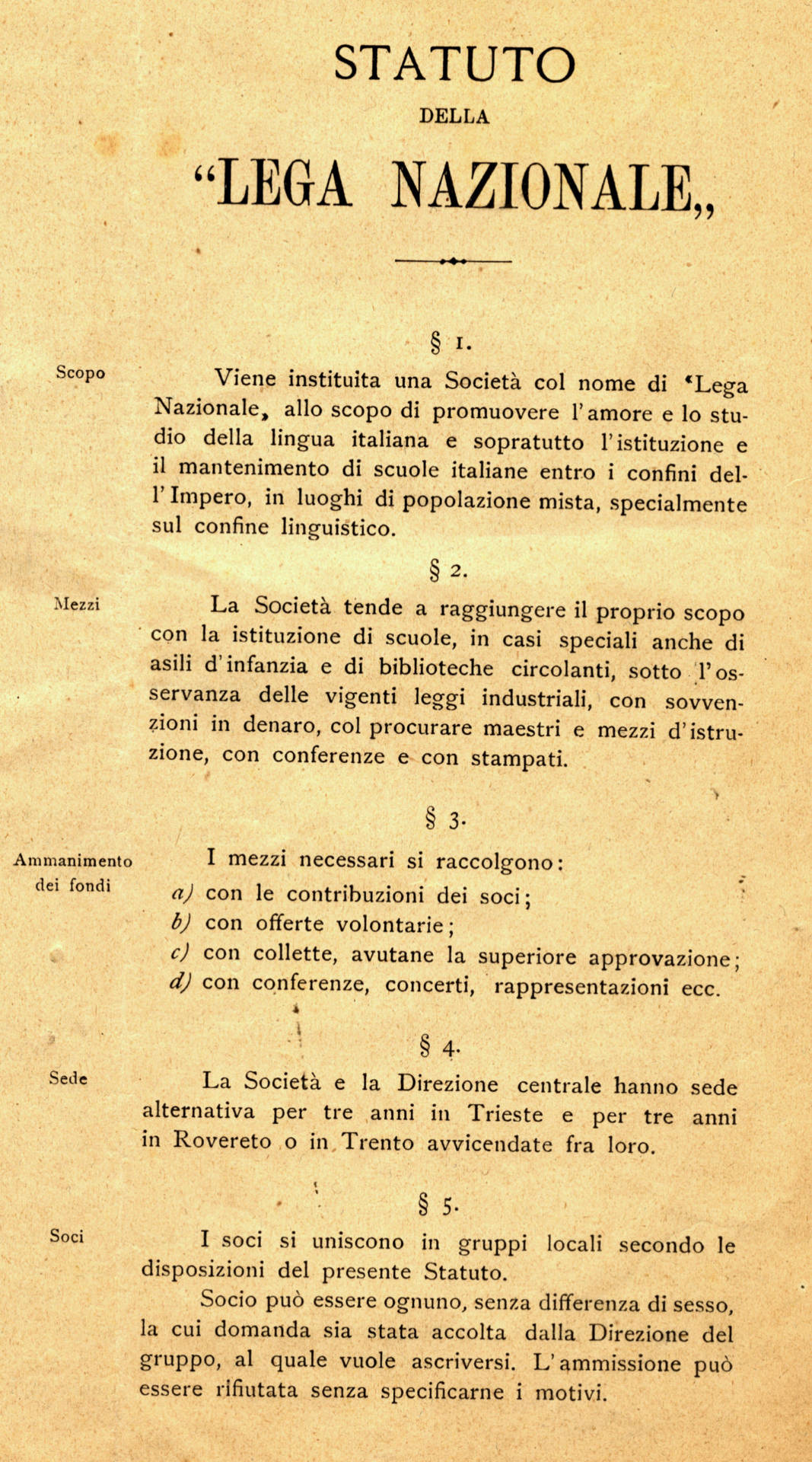
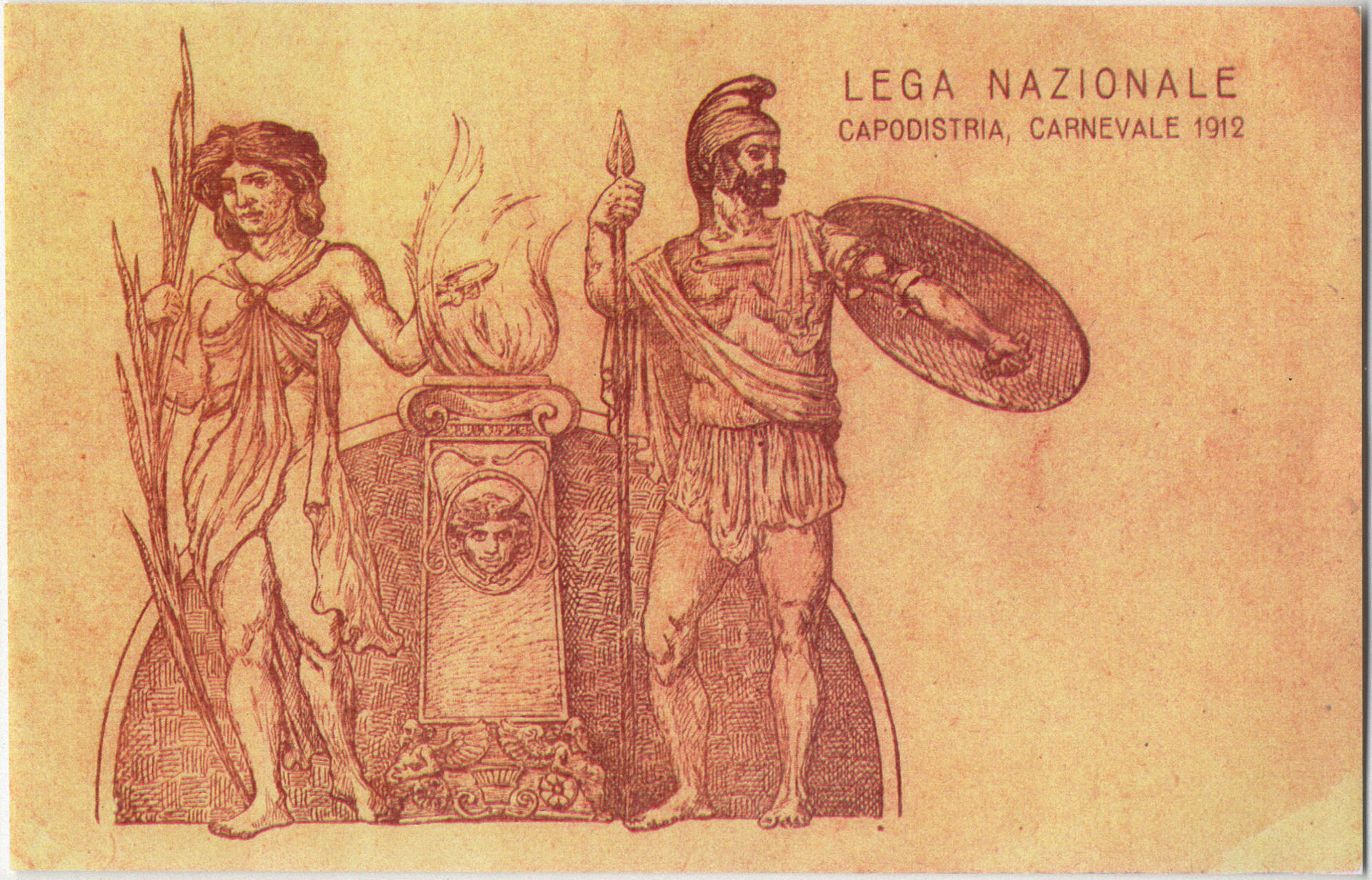
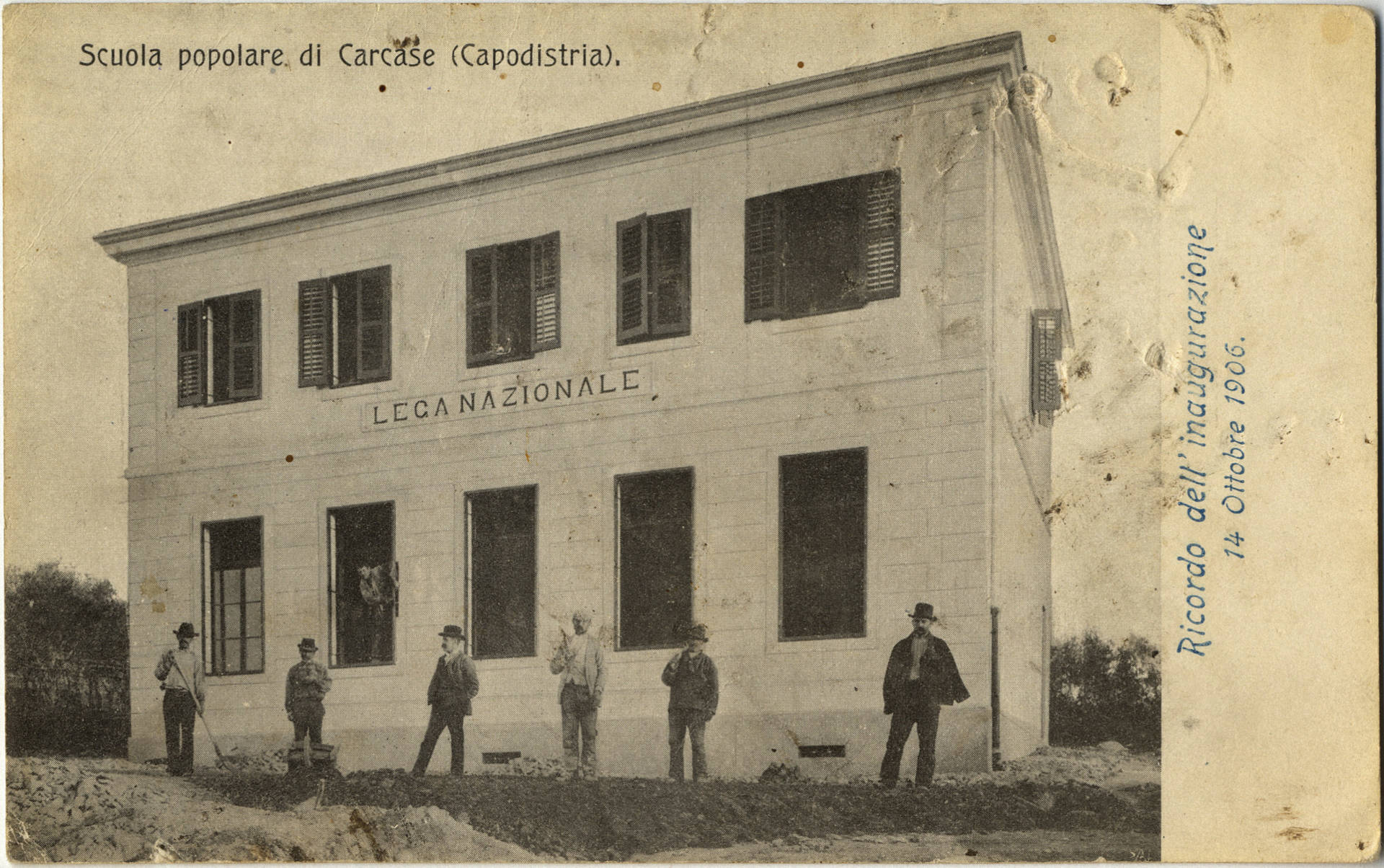
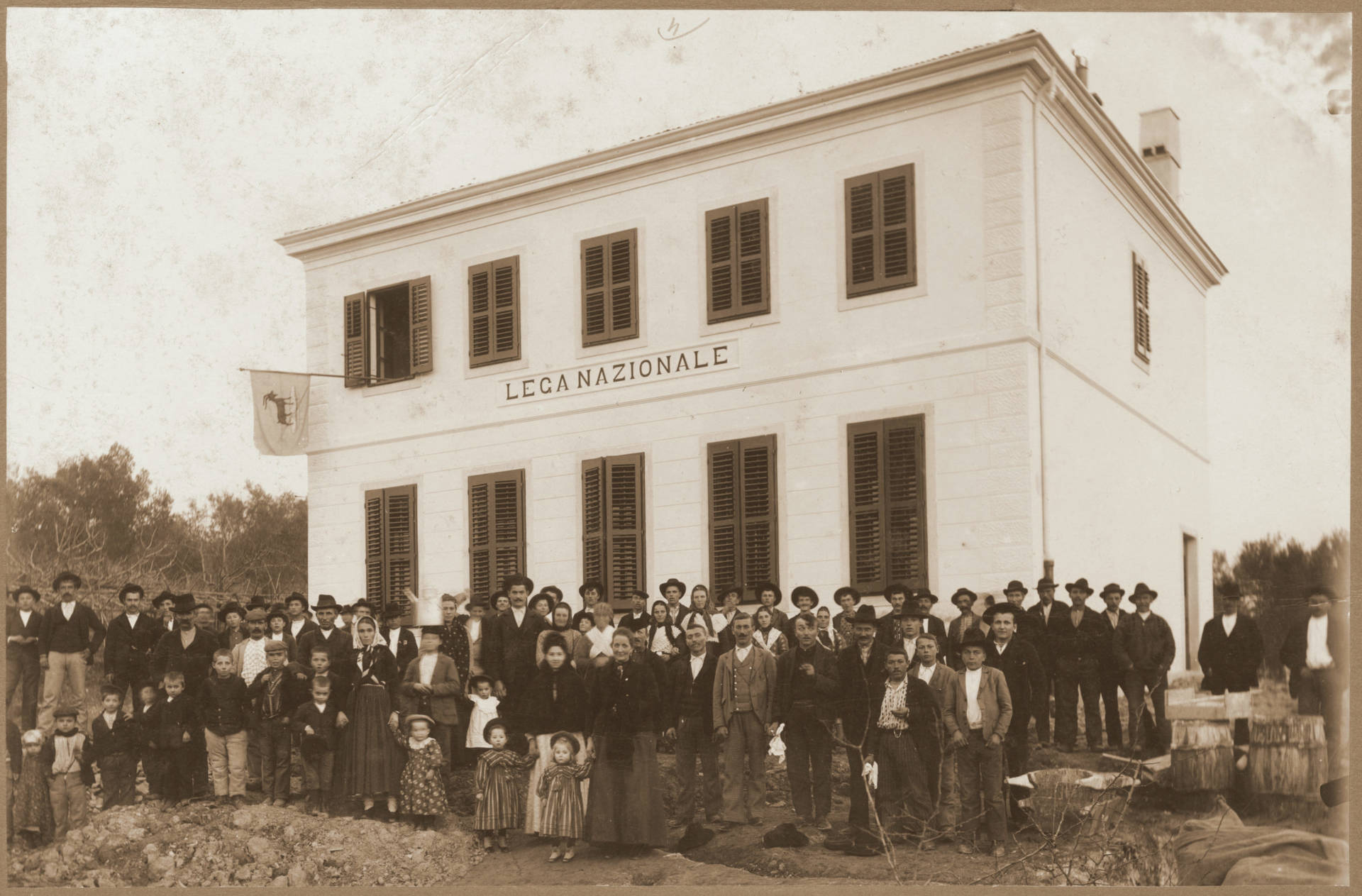
Cyril and Methodius Society
The Cyril and Methodius Society, founded in Ljubljana in 1886, played an important role in the development of Slovene schooling. The main purpose of the society was to defend the nation, which it did by establishing and maintaining private schools and nurseries in those places most at risk of German or Italian assimilation. Eight years later a Cyril and Methodius Society was founded for Istria, and four schools were opened in the Slovene part of Istria (Rakitovec, Koper, Lucija, Sveta Barbara).
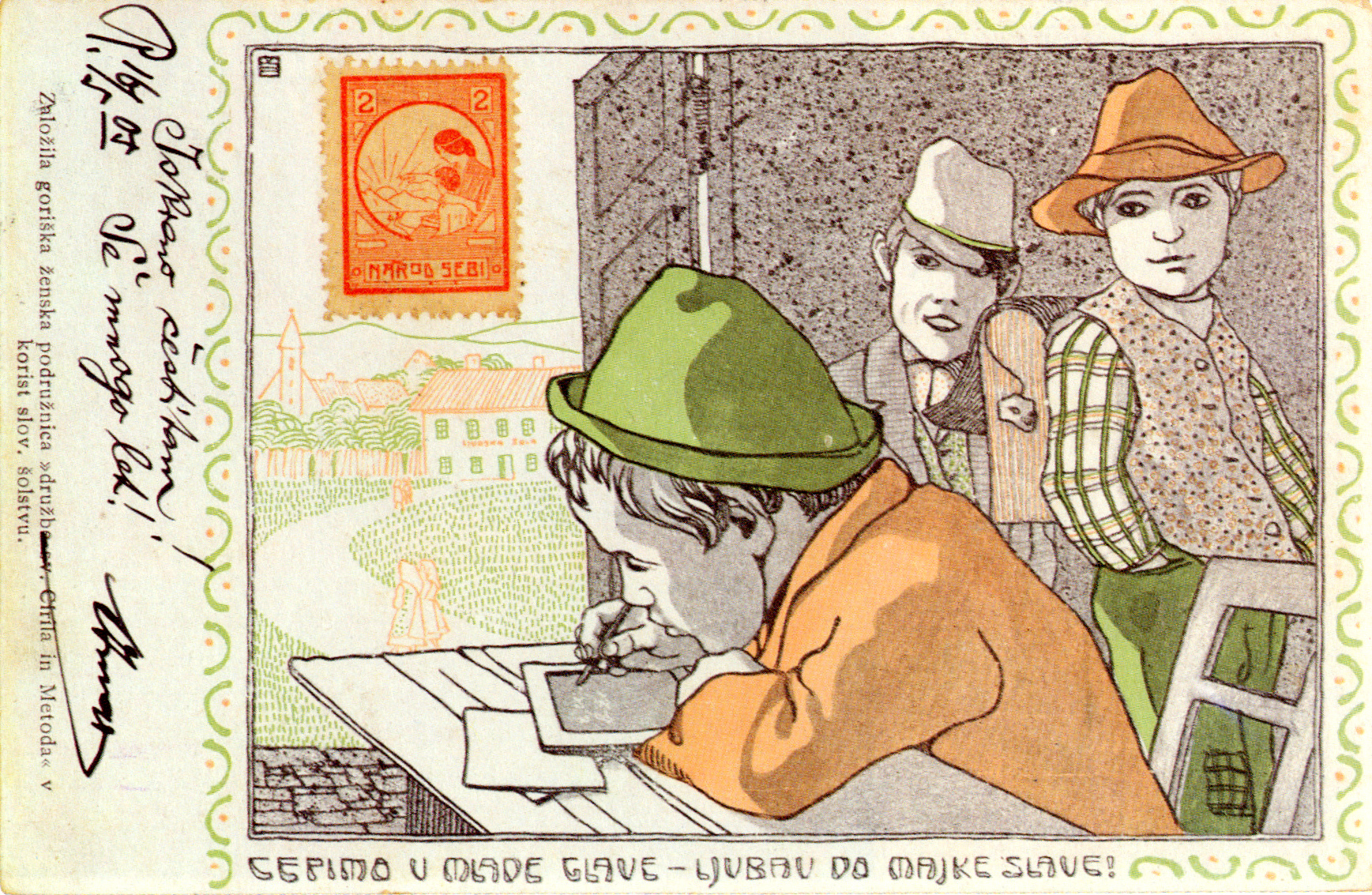 Postcards promoting the work of the Cyril and Methodius Society.
Postcards promoting the work of the Cyril and Methodius Society.
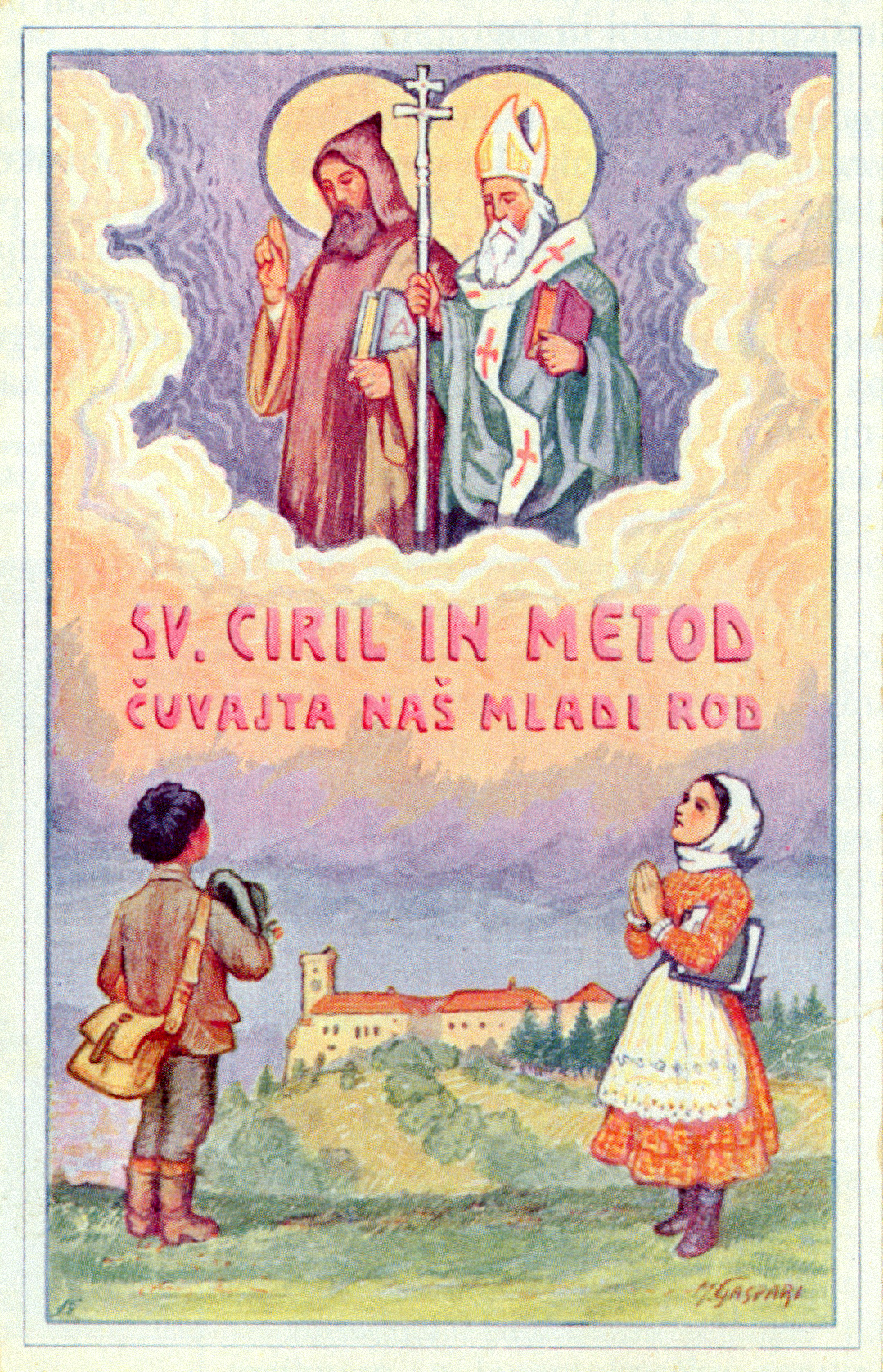 Postcards promoting the work of the Cyril and Methodius Society.
Postcards promoting the work of the Cyril and Methodius Society.
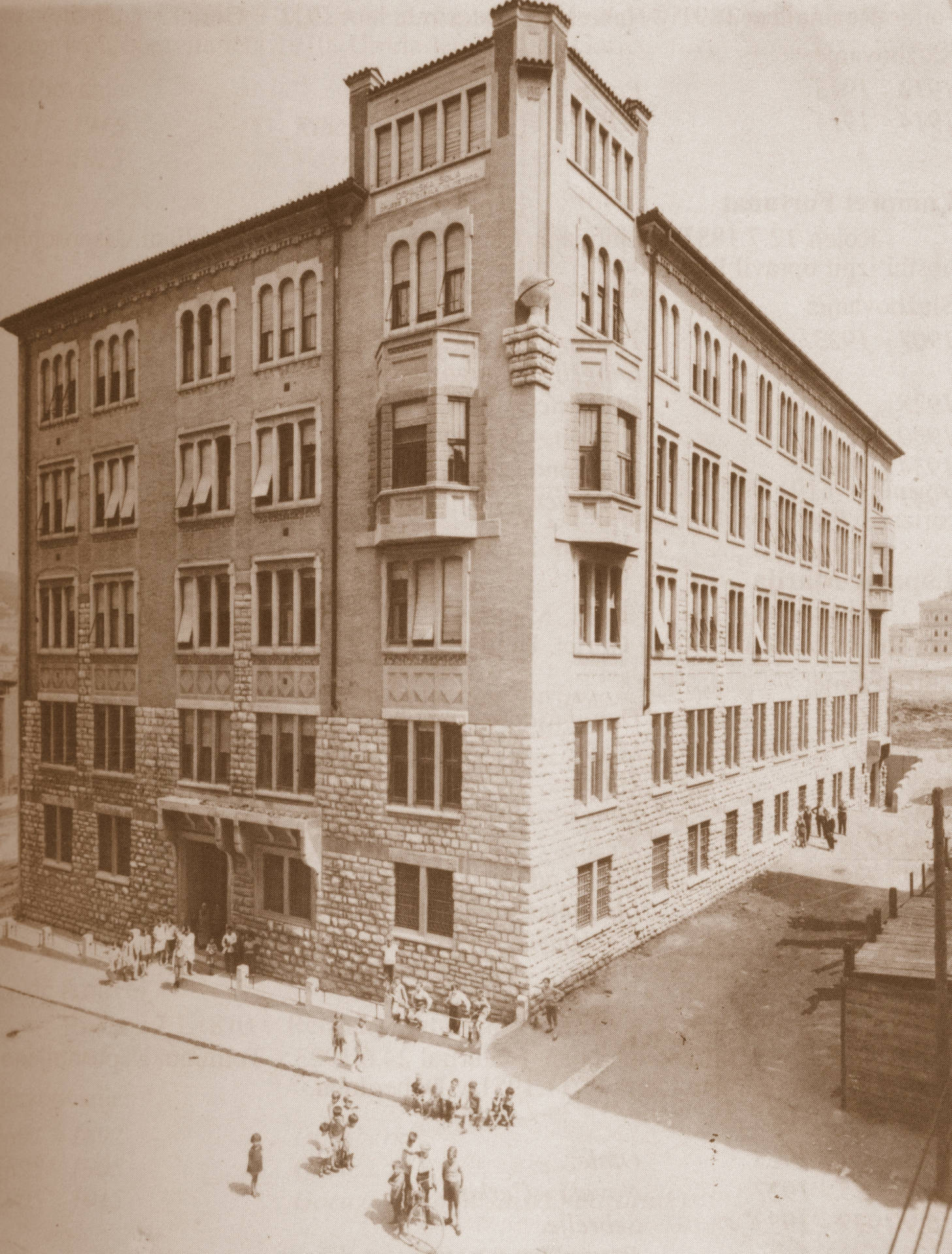 The Cyril and Methodius School in Trieste’s San Giacomo district. There were two such schools in Trieste before the First World War.
The Cyril and Methodius School in Trieste’s San Giacomo district. There were two such schools in Trieste before the First World War.
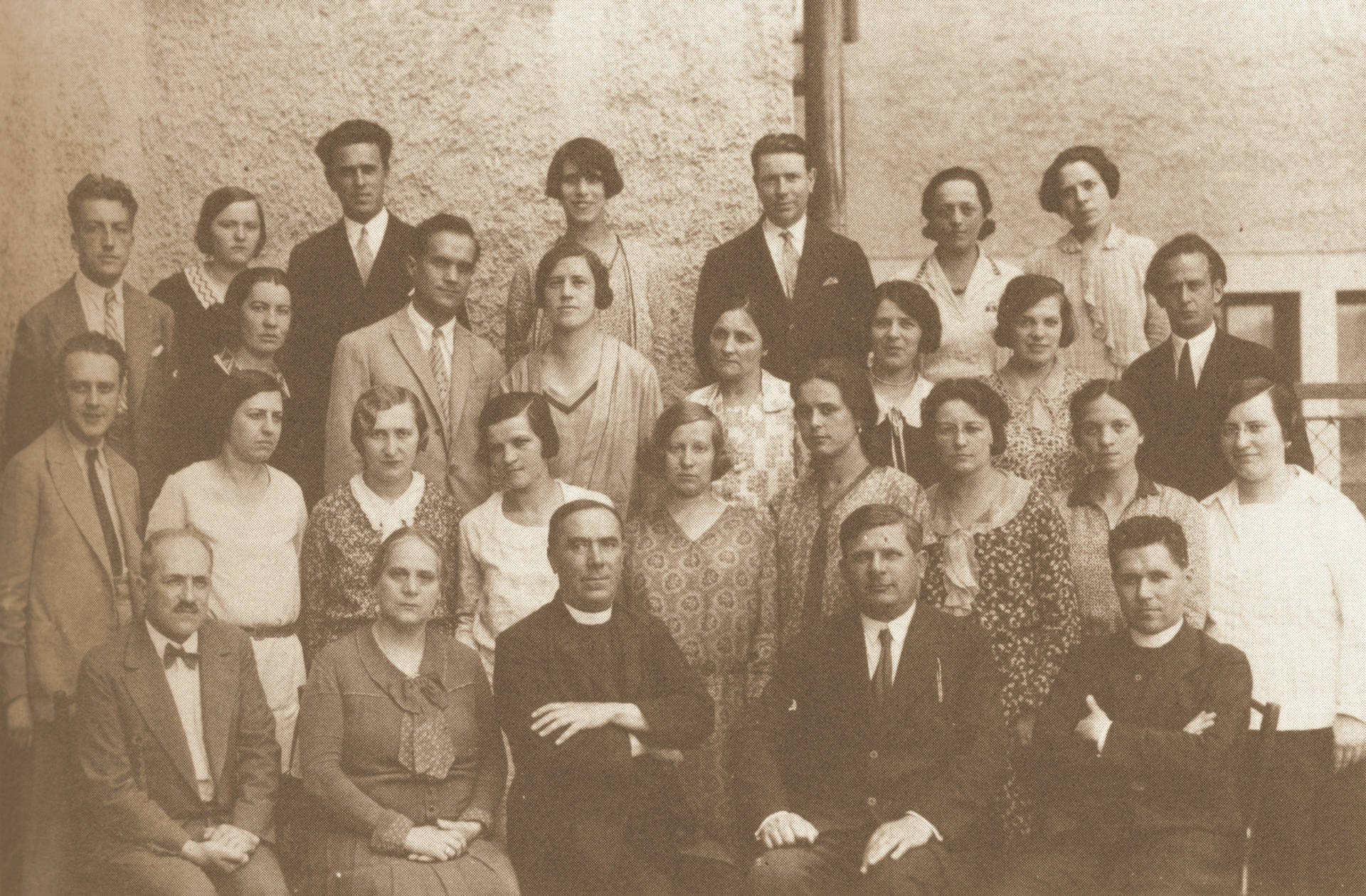 In 1930 the last Slovene school – the private Cyril and Methodius School in Trieste – was closed. The photograph shows the teaching staff before the school was dissolved.
In 1930 the last Slovene school – the private Cyril and Methodius School in Trieste – was closed. The photograph shows the teaching staff before the school was dissolved.
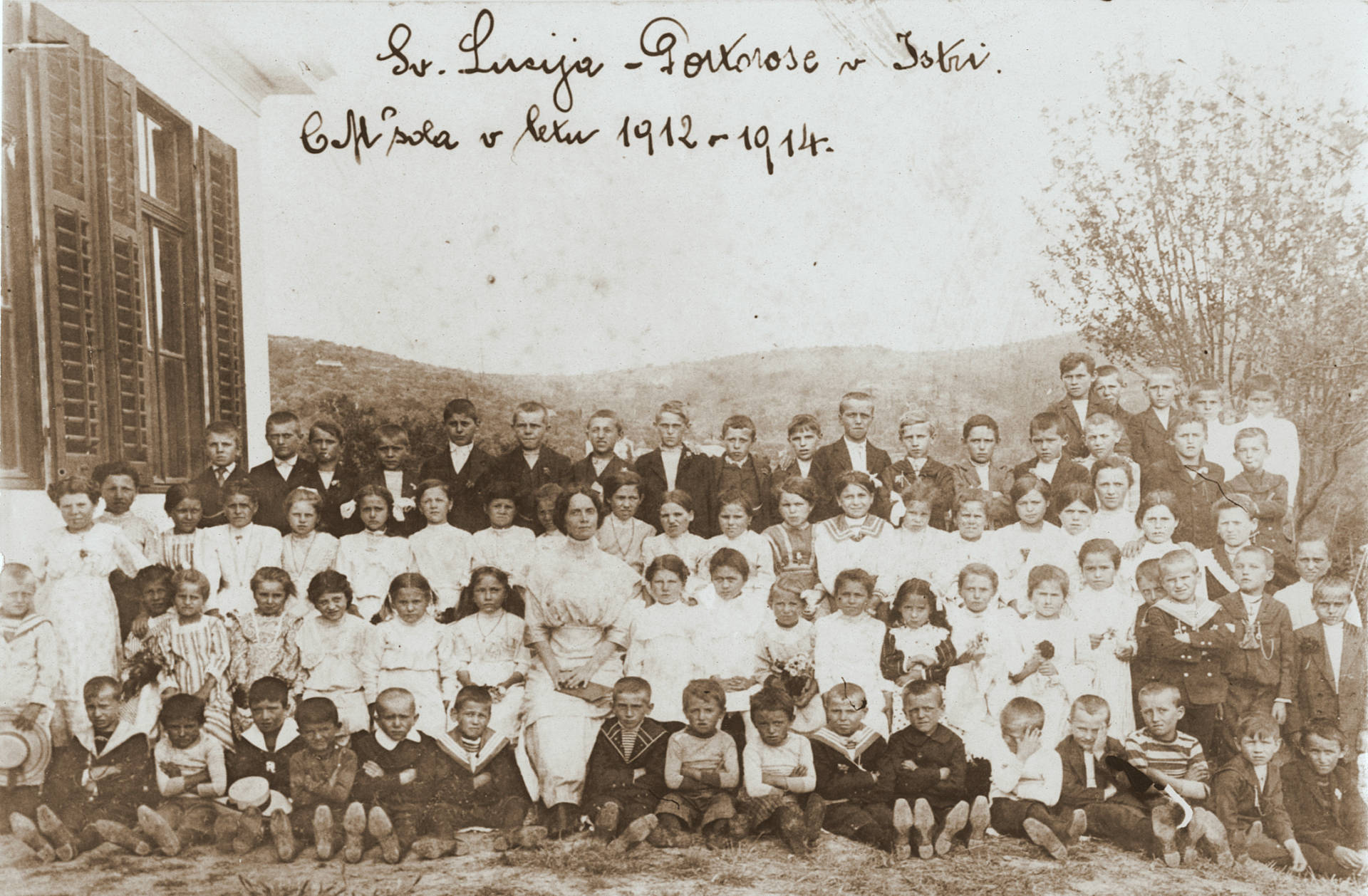 There were two schools in Lucija – the (Slovene) Cyril and Methodius School and the Italian school.
There were two schools in Lucija – the (Slovene) Cyril and Methodius School and the Italian school.

Education up to 1918
Elementary schools began to be opened in the Slovene part of Istria in 1819 (and in the Ilirska Bistrica area in 1814). To begin with, teaching was in German and Slovene. An 1849 decree defined the mother tongue as the language of instruction, while in 1867 the Basic Law on the General Rights of Citizens clearly stipulated that the mother tongue of pupils should be the language of instruction in public elementary schools. The Provincial Diet of Istria passed its own law, under which the language of instruction was to be decided by the provincial education council. This meant that when it came to establishing and operating schools and introducing Slovene as the language of instruction, the Slovenes of Istria faced strong resistance from the Italian irredentists, who represented the majority in the Provincial Diet.
In the 1914/15 academic year there were around 50 elementary schools in Slovene Istria, the Brkini Hills and the Ilirska Bistrica area.
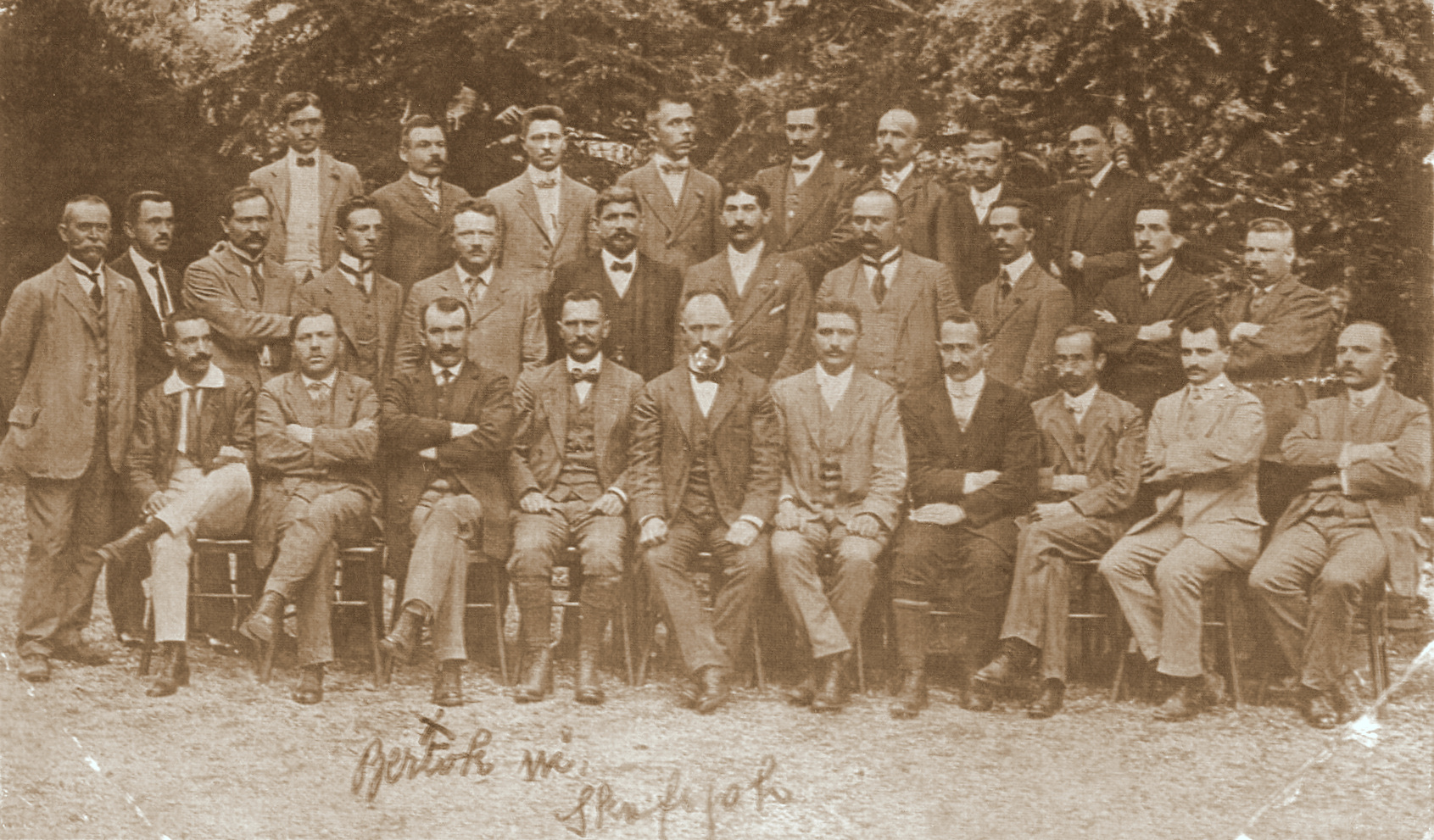 Slovene teachers in the Koper district in 1912.
Slovene teachers in the Koper district in 1912.
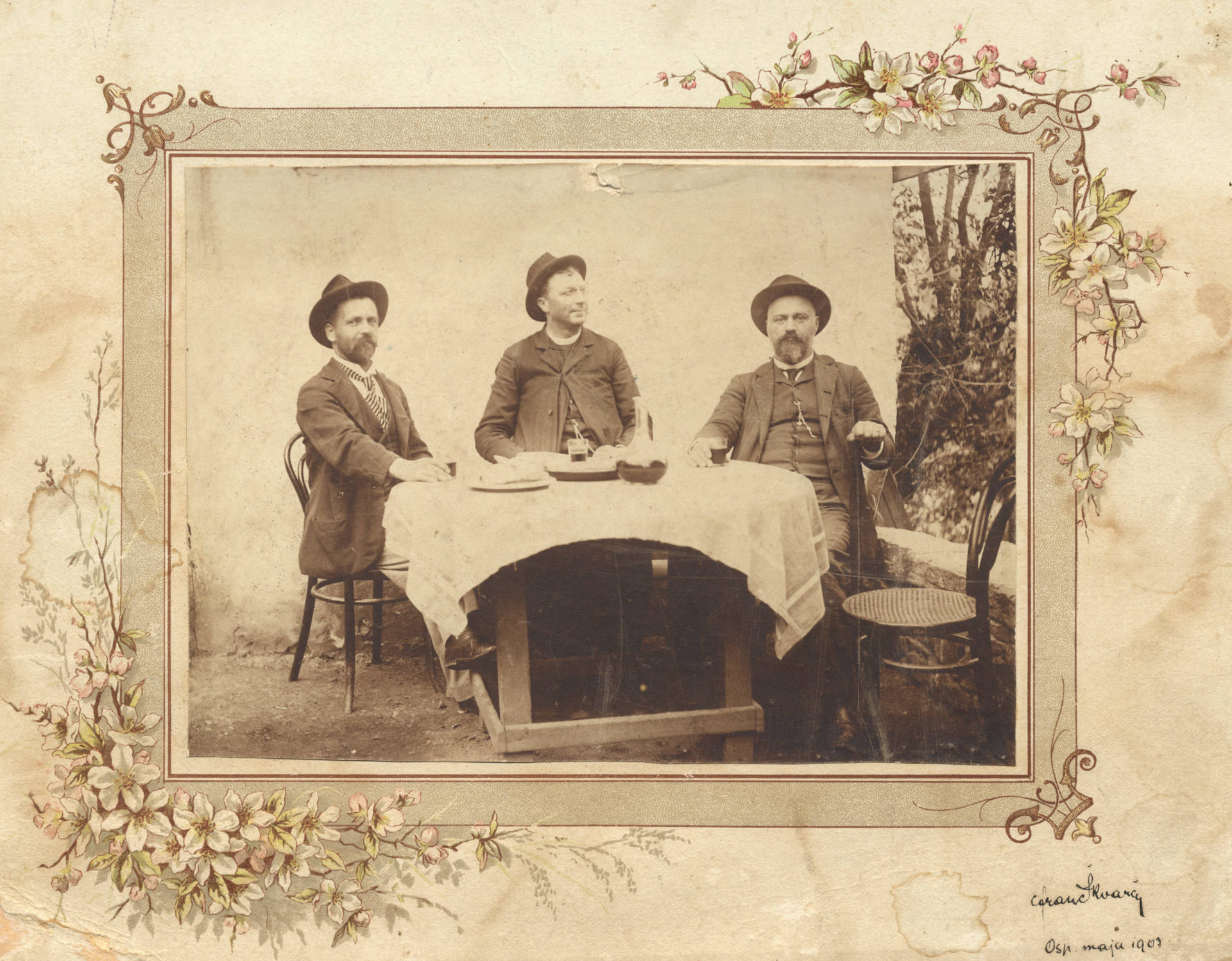 Schoolteachers Fran Jereb and Alojzij Bunc and, between them, Josip Kompare, the dean of the parish of Osp and a member of the Provincial Diet, who did much for the development of schools and cultural organisations in Slovene Istria.
Schoolteachers Fran Jereb and Alojzij Bunc and, between them, Josip Kompare, the dean of the parish of Osp and a member of the Provincial Diet, who did much for the development of schools and cultural organisations in Slovene Istria.
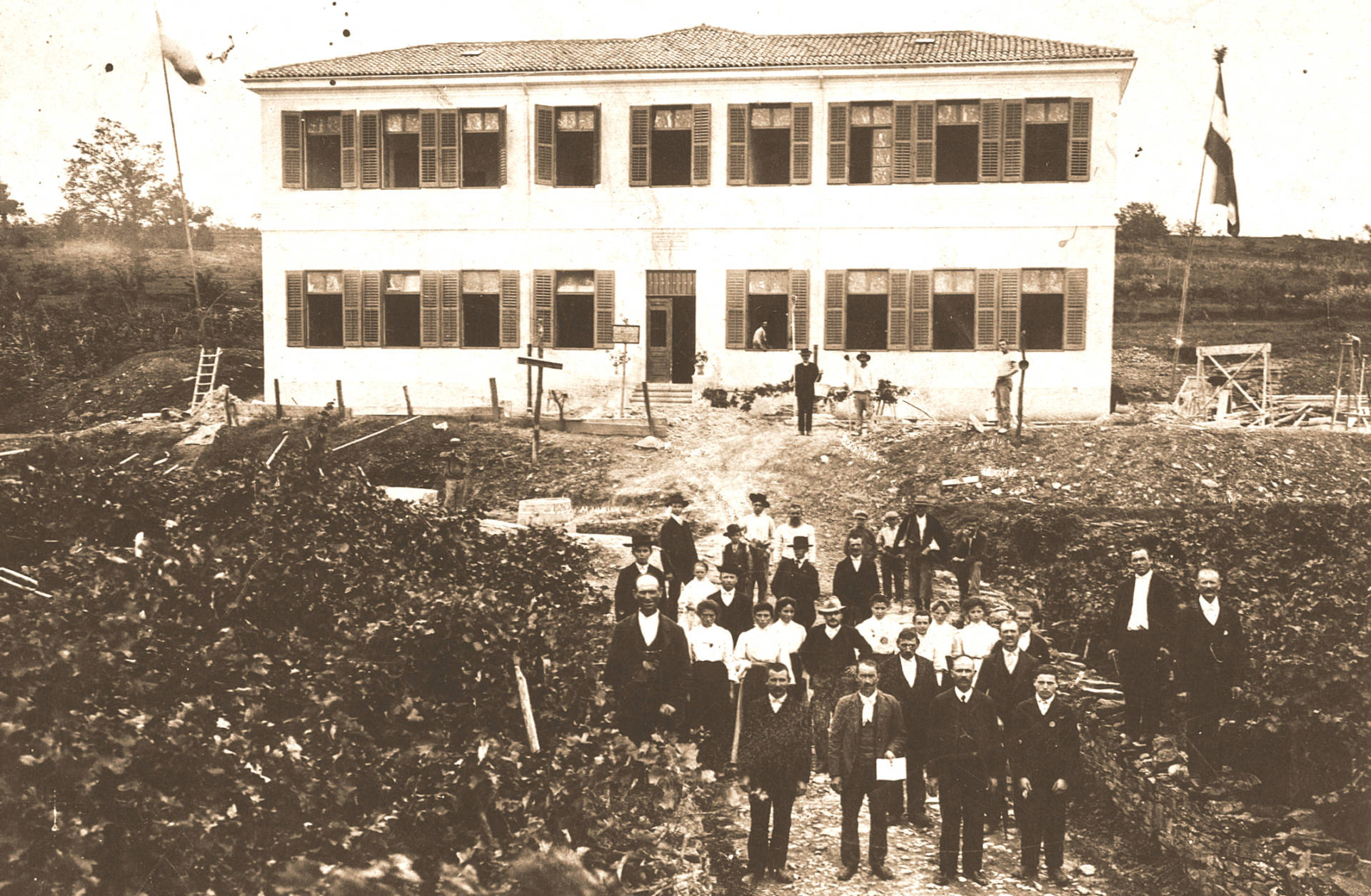 Opening of the school in Truške in 1905.
Opening of the school in Truške in 1905.
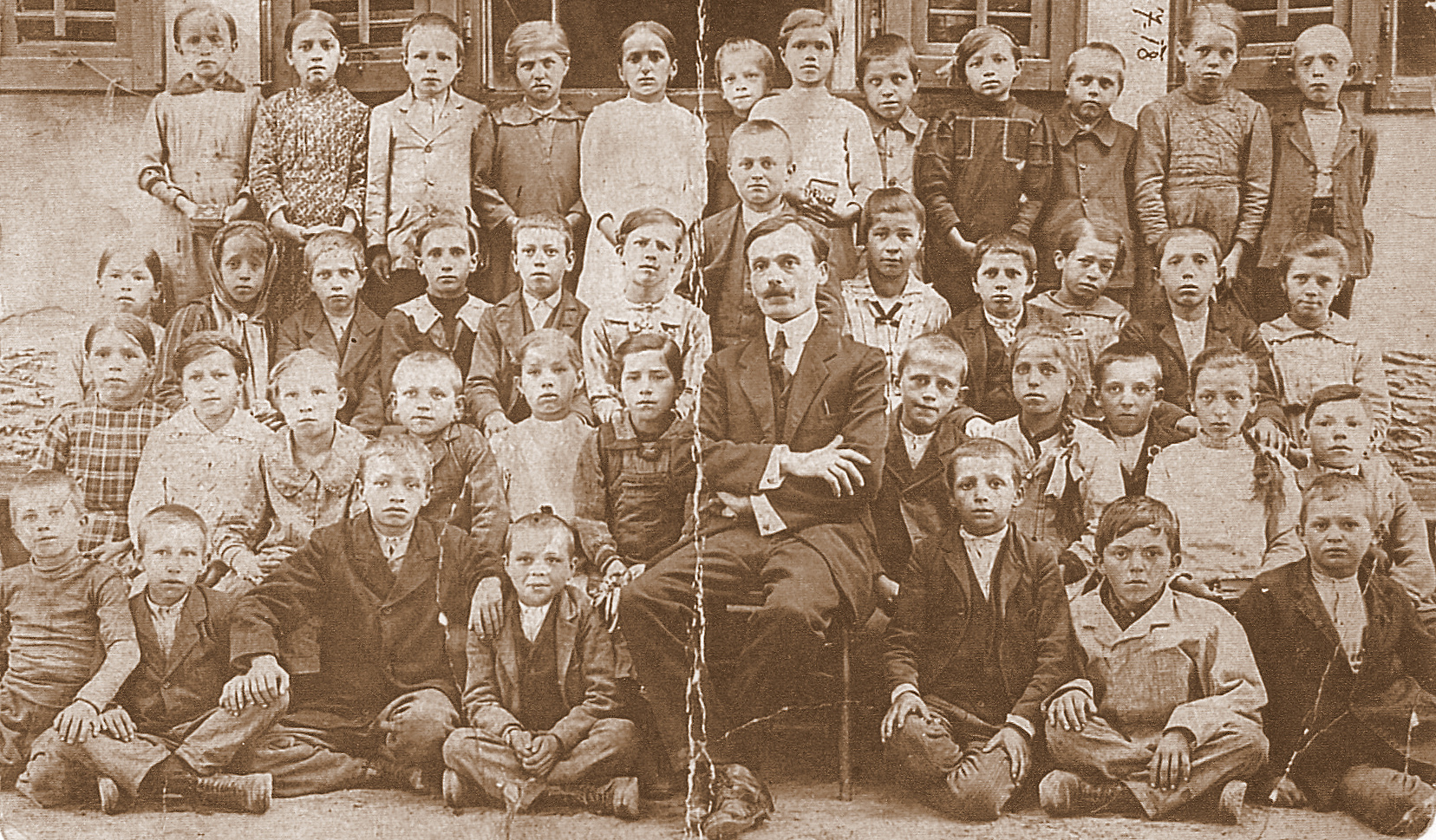 Pupils of the school in Brezovica with their teacher Ludvik Žerjav.
Pupils of the school in Brezovica with their teacher Ludvik Žerjav.
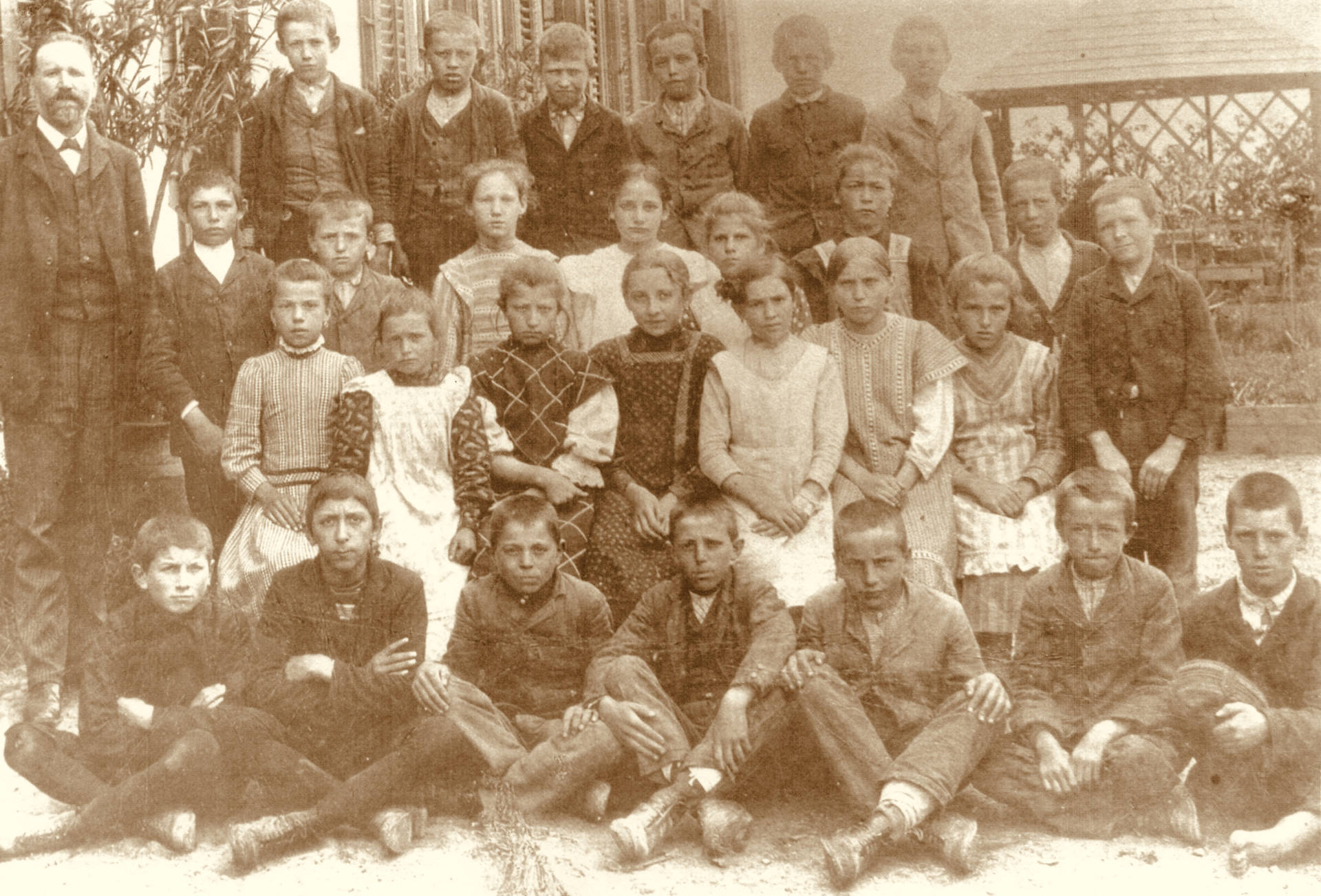 Hrpelje in around 1910. Pupils and teacher Štefan Šiškovič.
Hrpelje in around 1910. Pupils and teacher Štefan Šiškovič.
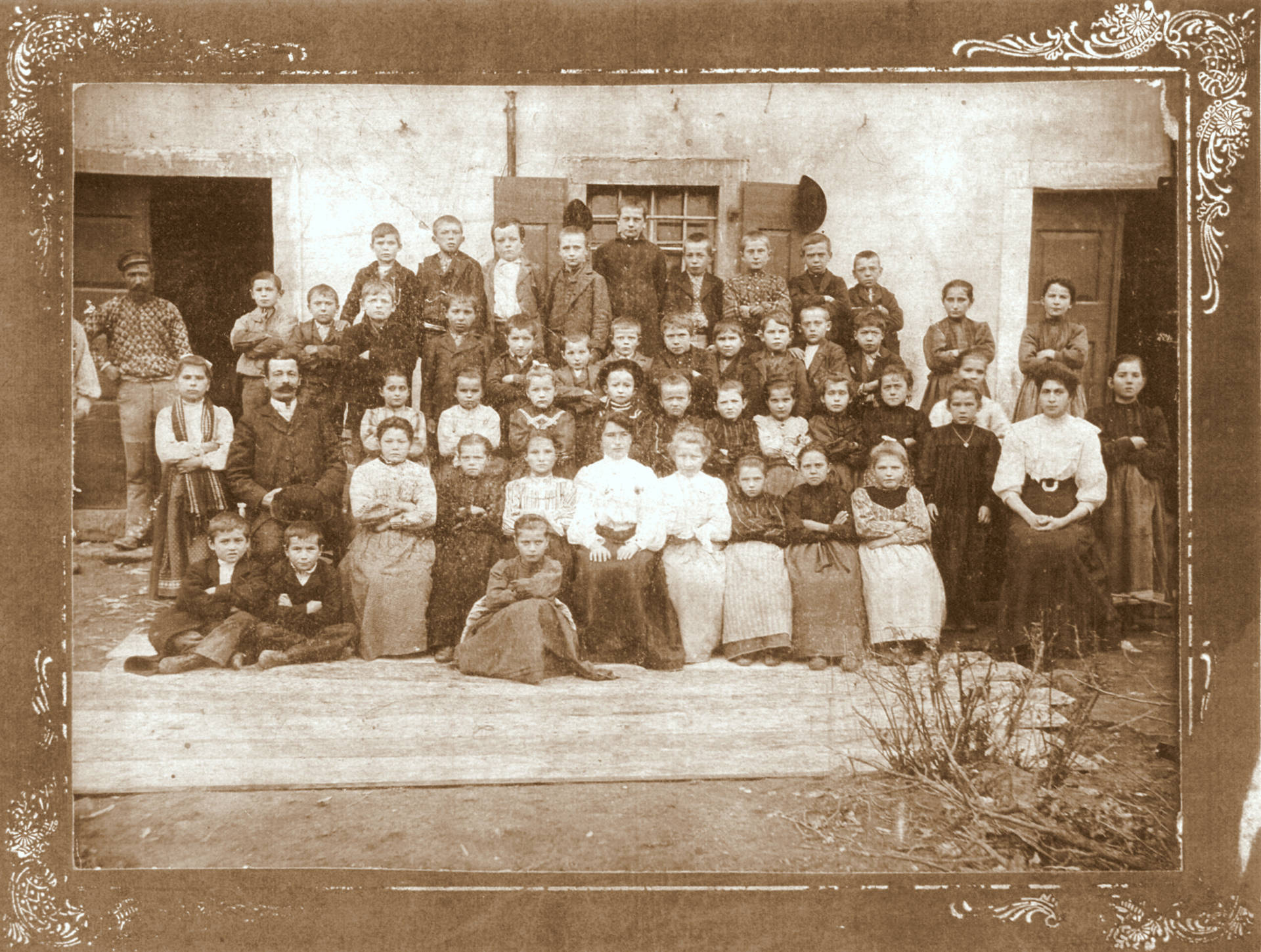 Pupils of the deanery school in 1907 and teachers Ivan Kuret, Helena Prešeren and Katarina Kuret.
Pupils of the deanery school in 1907 and teachers Ivan Kuret, Helena Prešeren and Katarina Kuret.
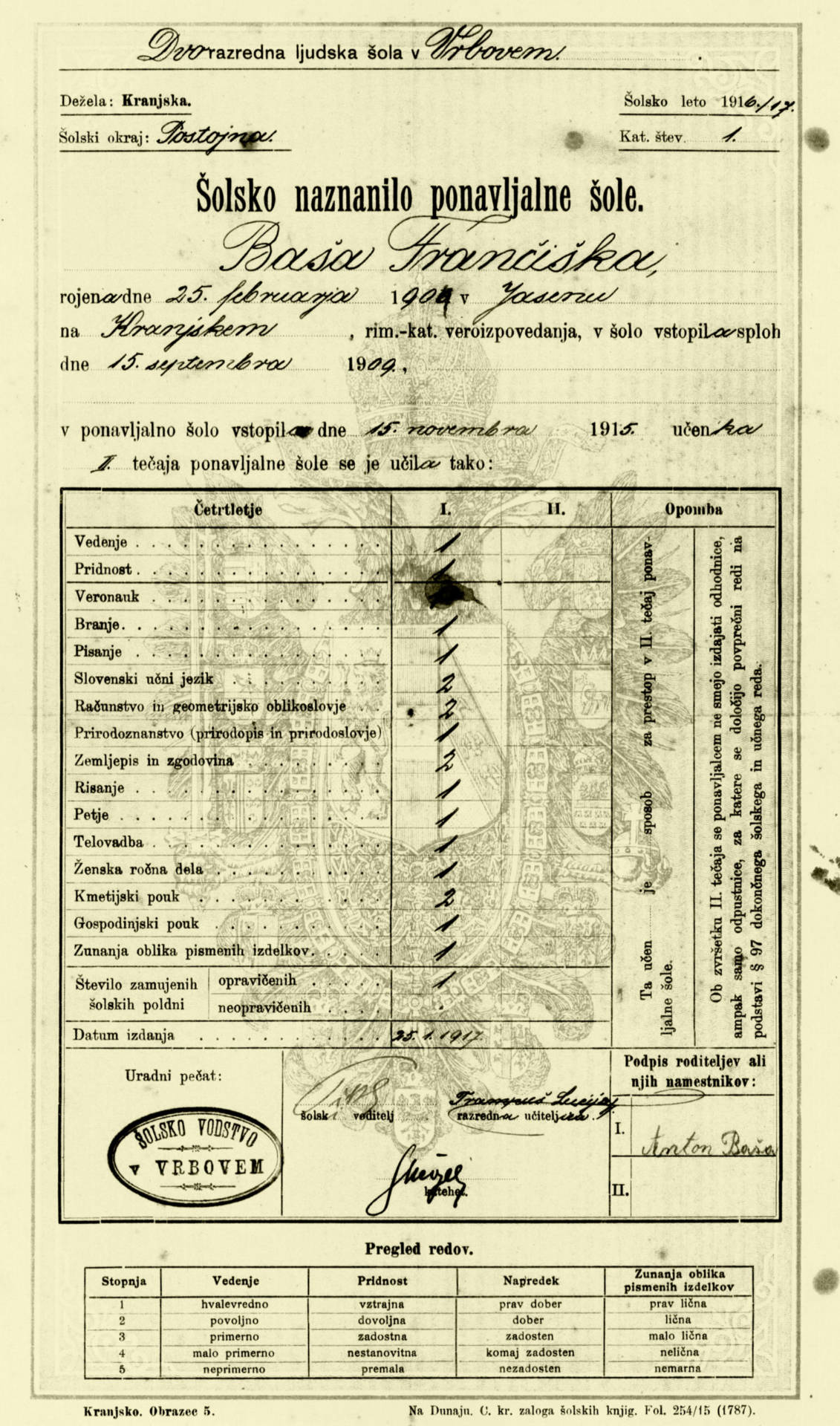
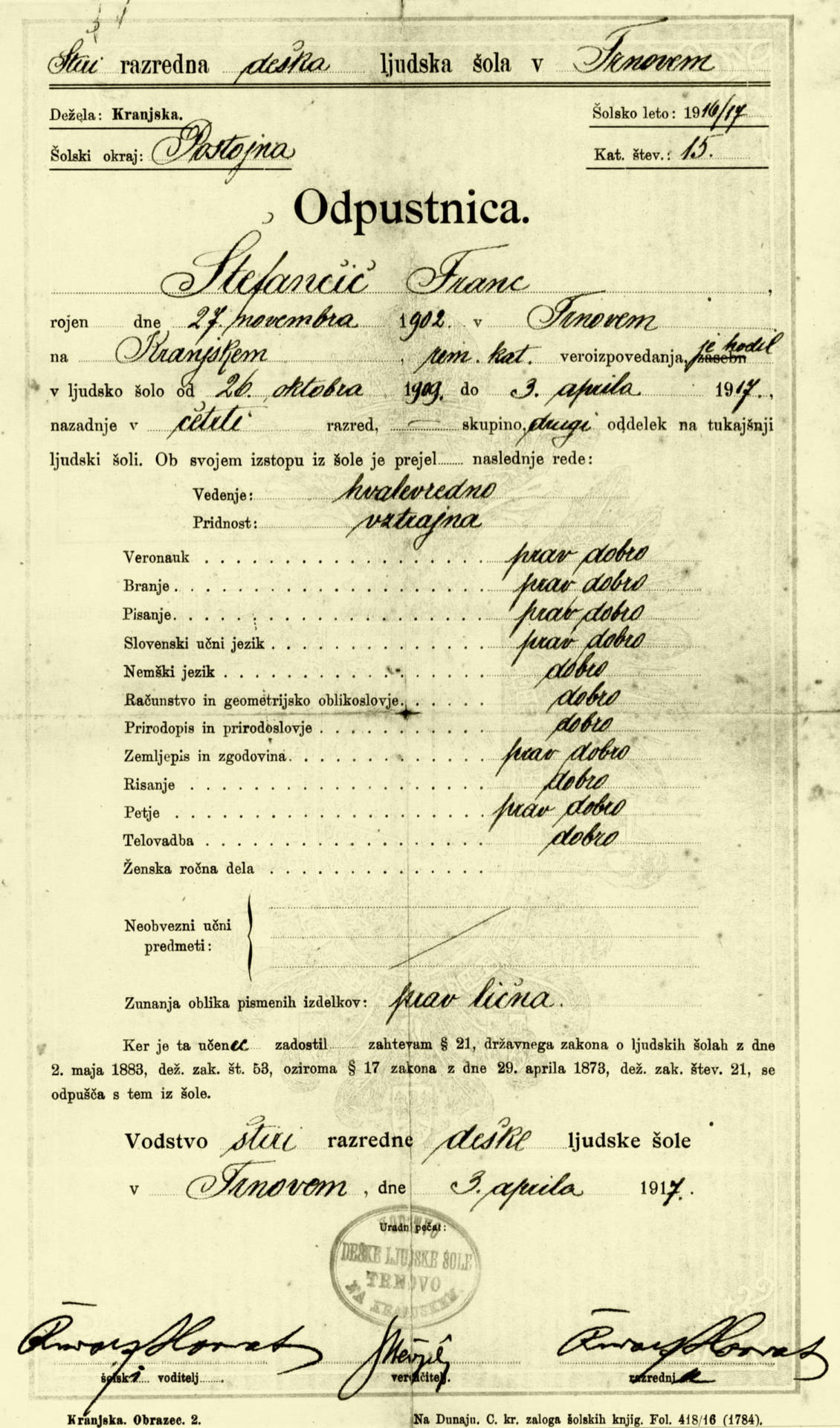
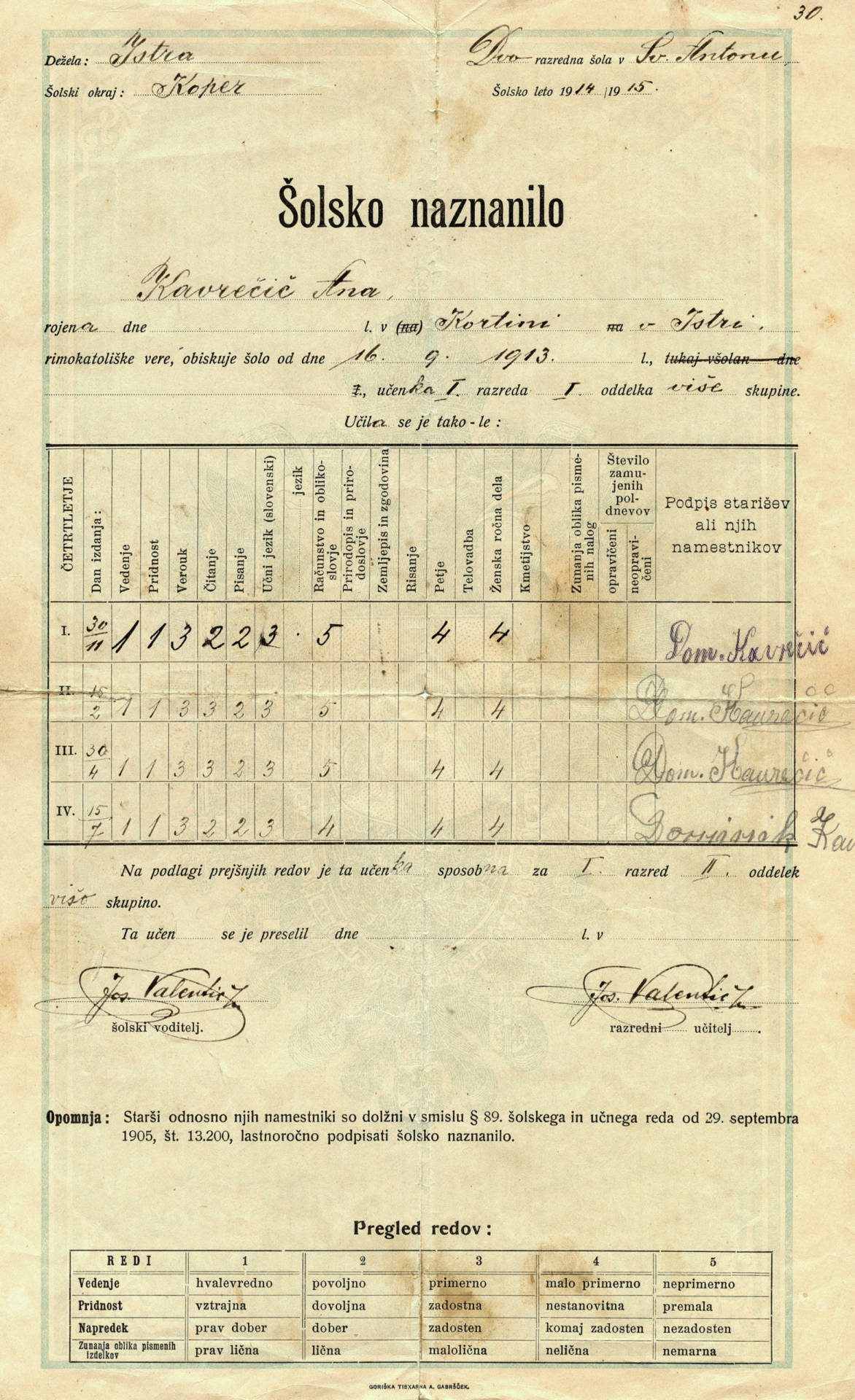
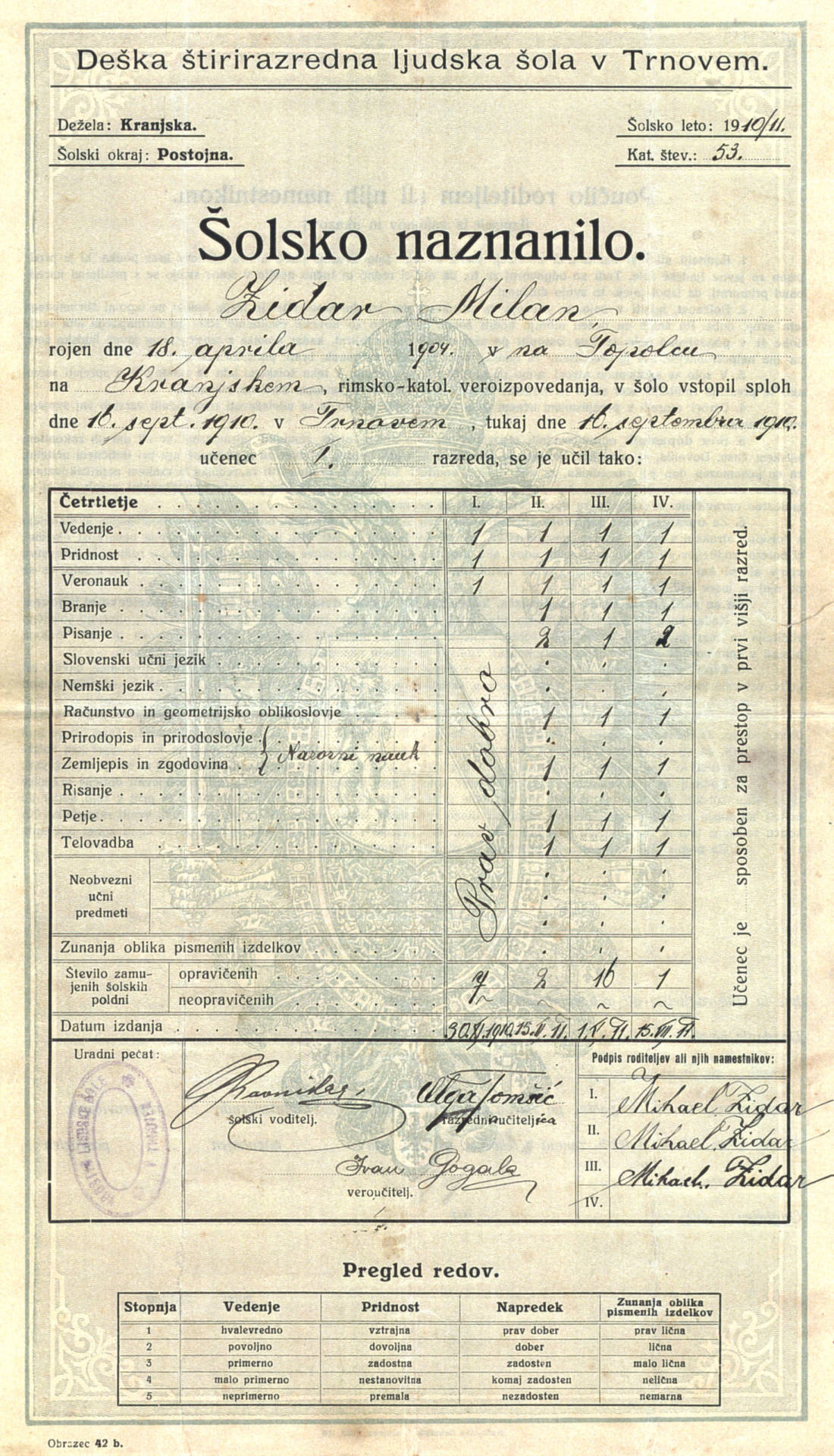
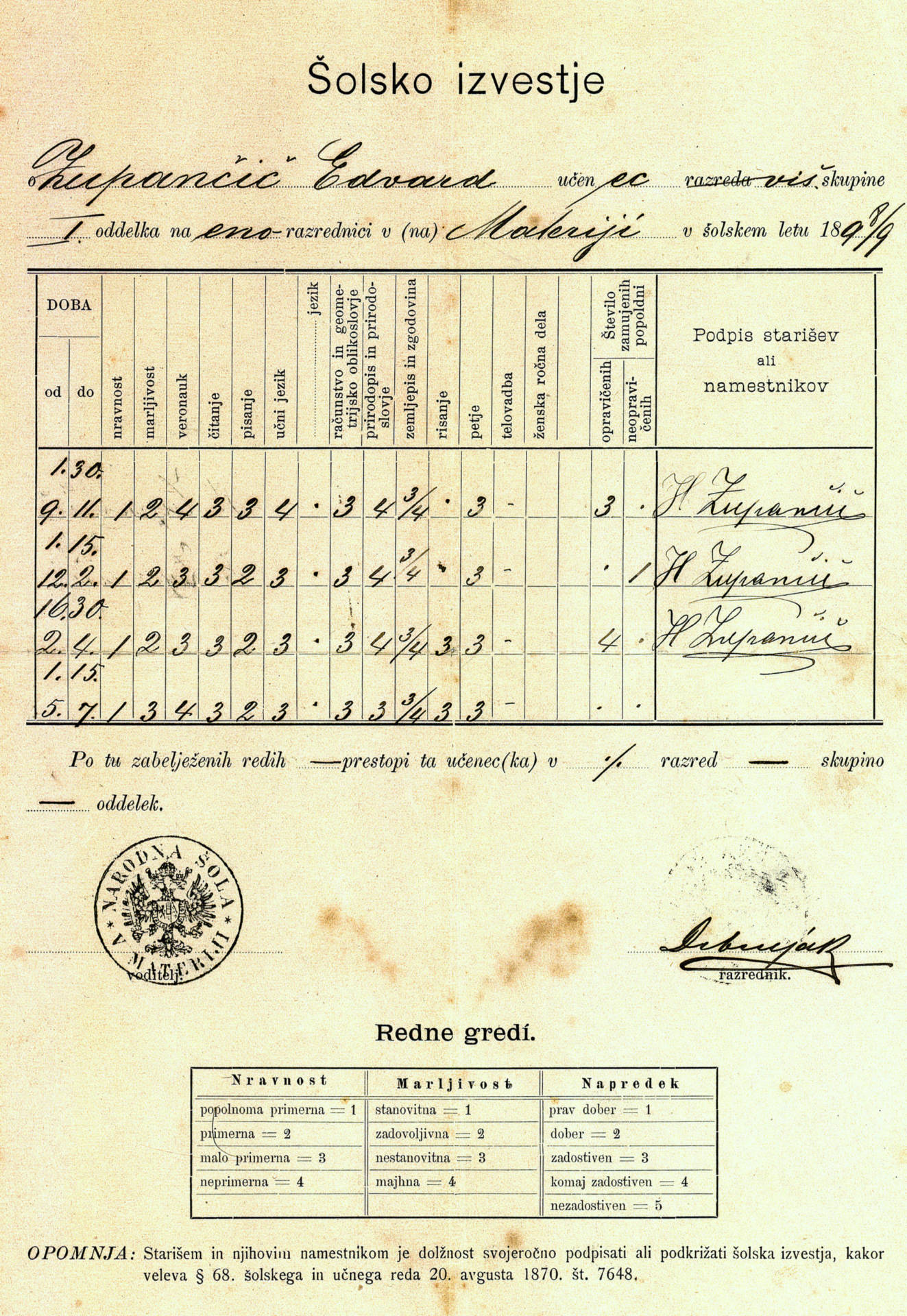
Education/ 1919–1943
At the end of the First World War, all the schools that had operated in a reduced manner because of the war began functioning normally again with the status they had acquired as part of Austria-Hungary. The Gentile Reform adopted on 1 October 1923 began the gradual elimination of the Slovene language from all Slovene schools. Thus began a linguistic genocide without equal in the Europe of the day, and a veritable calvary for the teachers of the region, who were dismissed, transferred, or compelled to take early retirement. From now on Slovene children were taught by Italian teachers or, in some places, by Slovene teachers teaching in Italian.
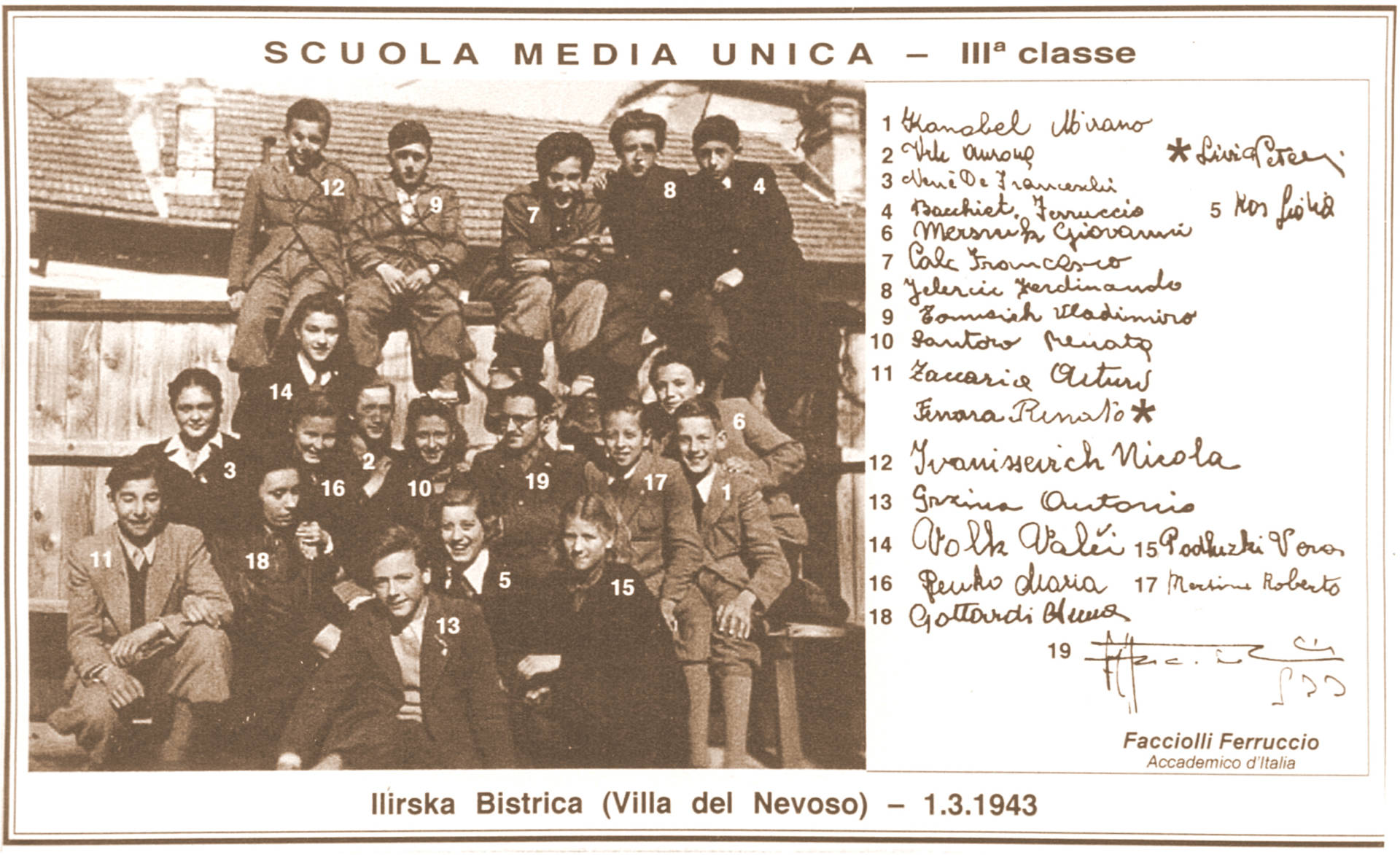 Third-year pupils of the lower secondary school in Ilirska Bistrica, founded in 1939.
Third-year pupils of the lower secondary school in Ilirska Bistrica, founded in 1939.
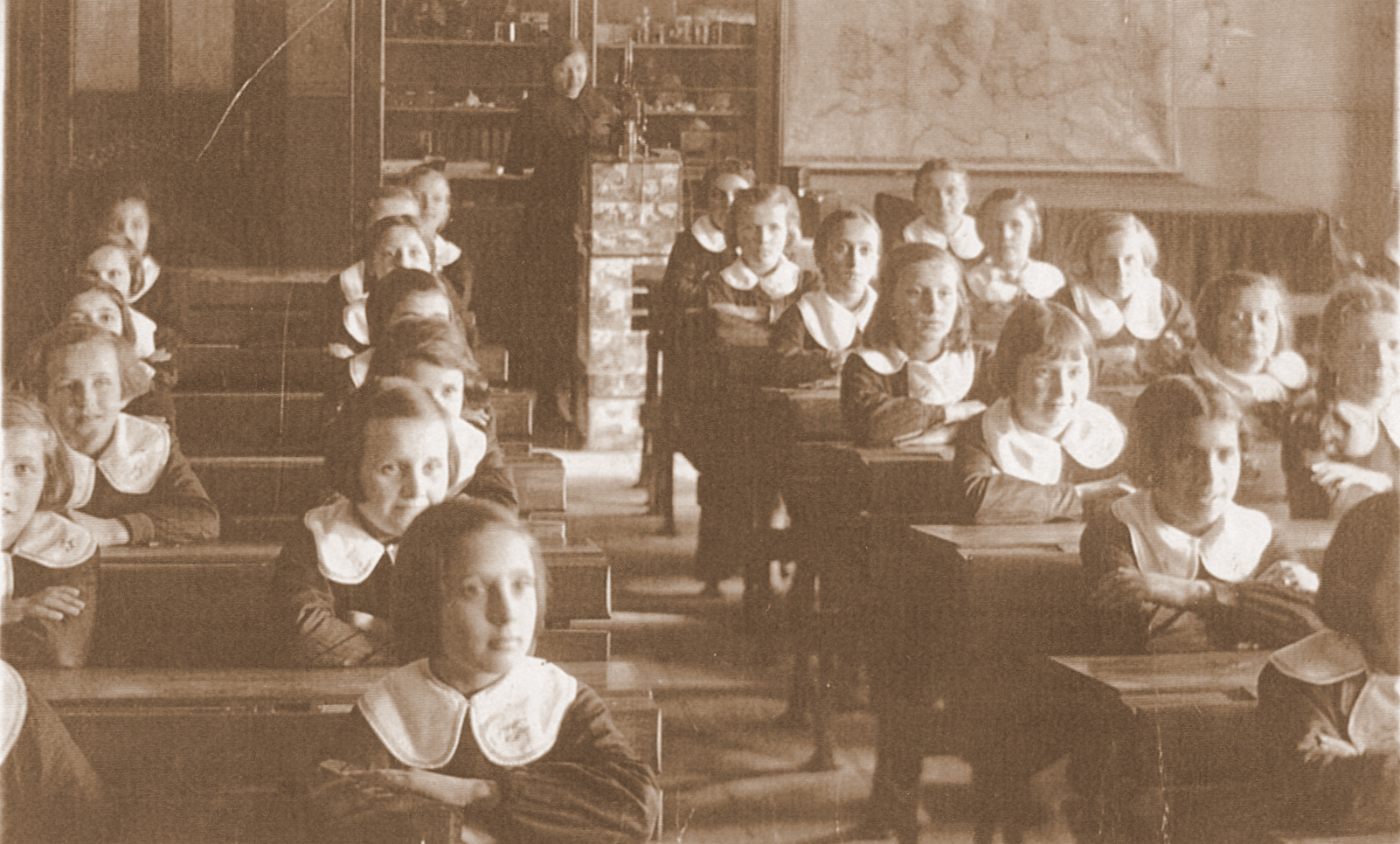 Fifth-year pupils of the girls’ convent school in Ilirska Bistrica, 1936.
Fifth-year pupils of the girls’ convent school in Ilirska Bistrica, 1936.
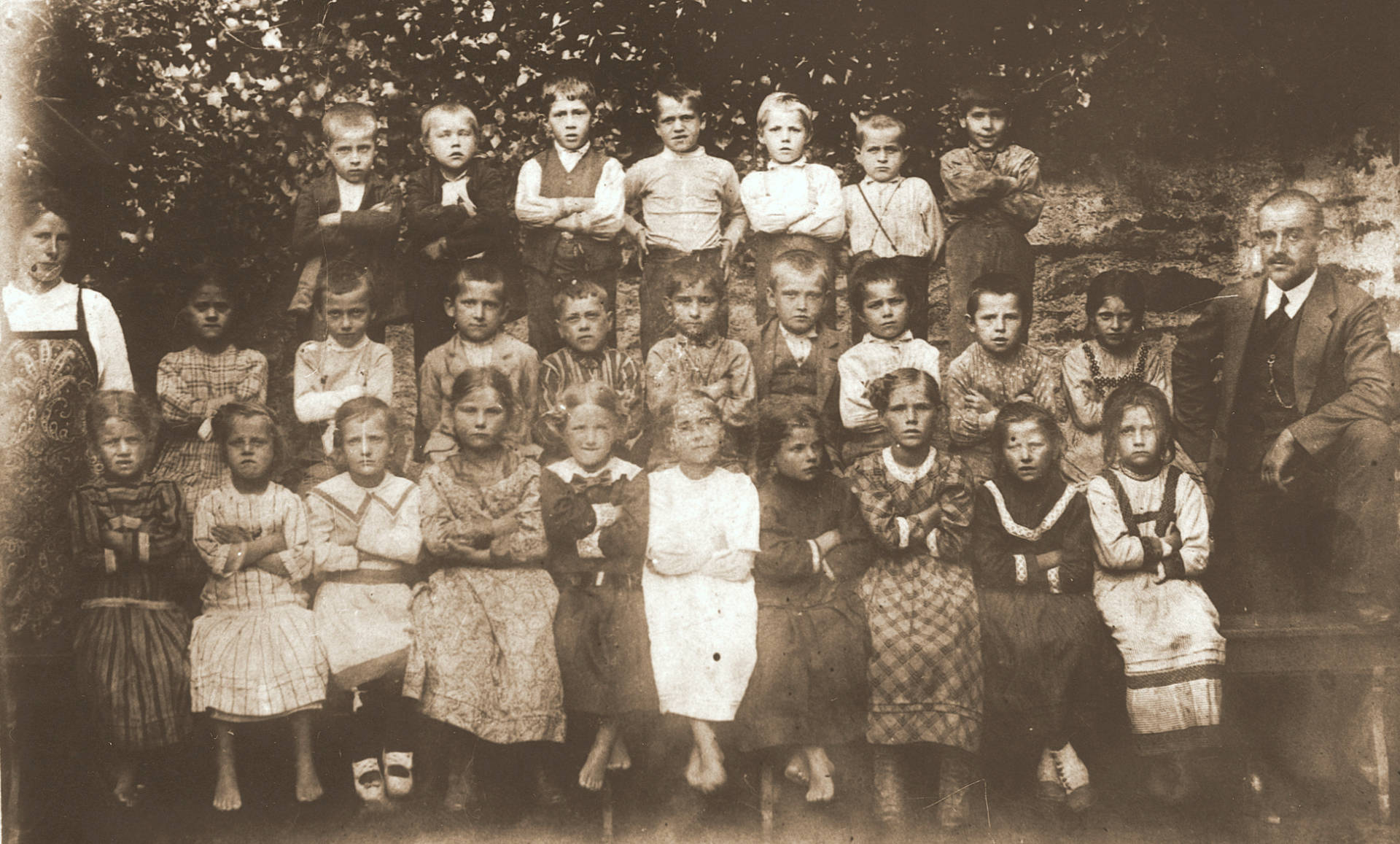 Dekani, 1921 – schoolchildren and their teacher Bogumil Medvešček.
Dekani, 1921 – schoolchildren and their teacher Bogumil Medvešček.
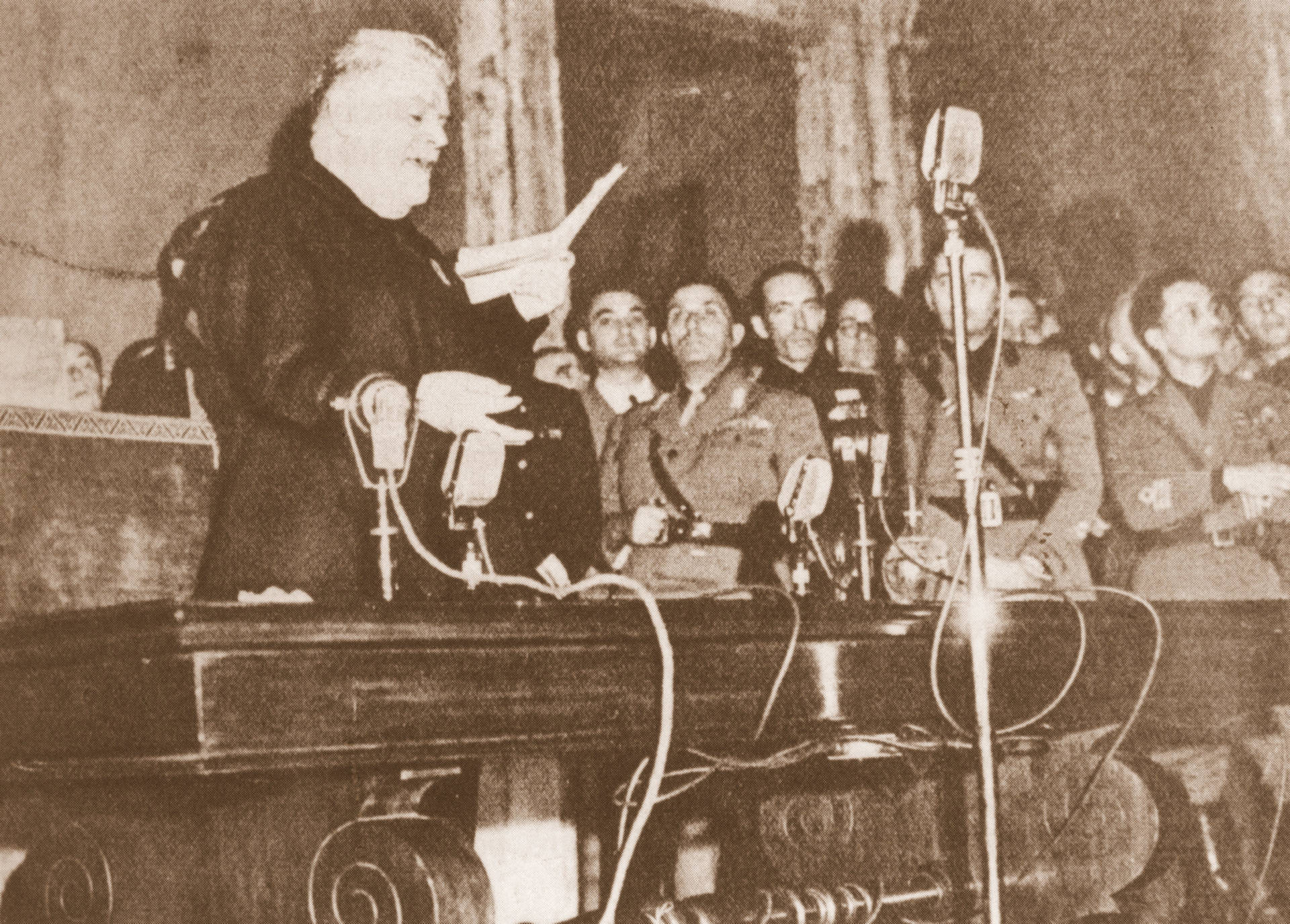 Giovanni Gentile, the Italian education minister responsible for the reform of the education system.
Giovanni Gentile, the Italian education minister responsible for the reform of the education system.
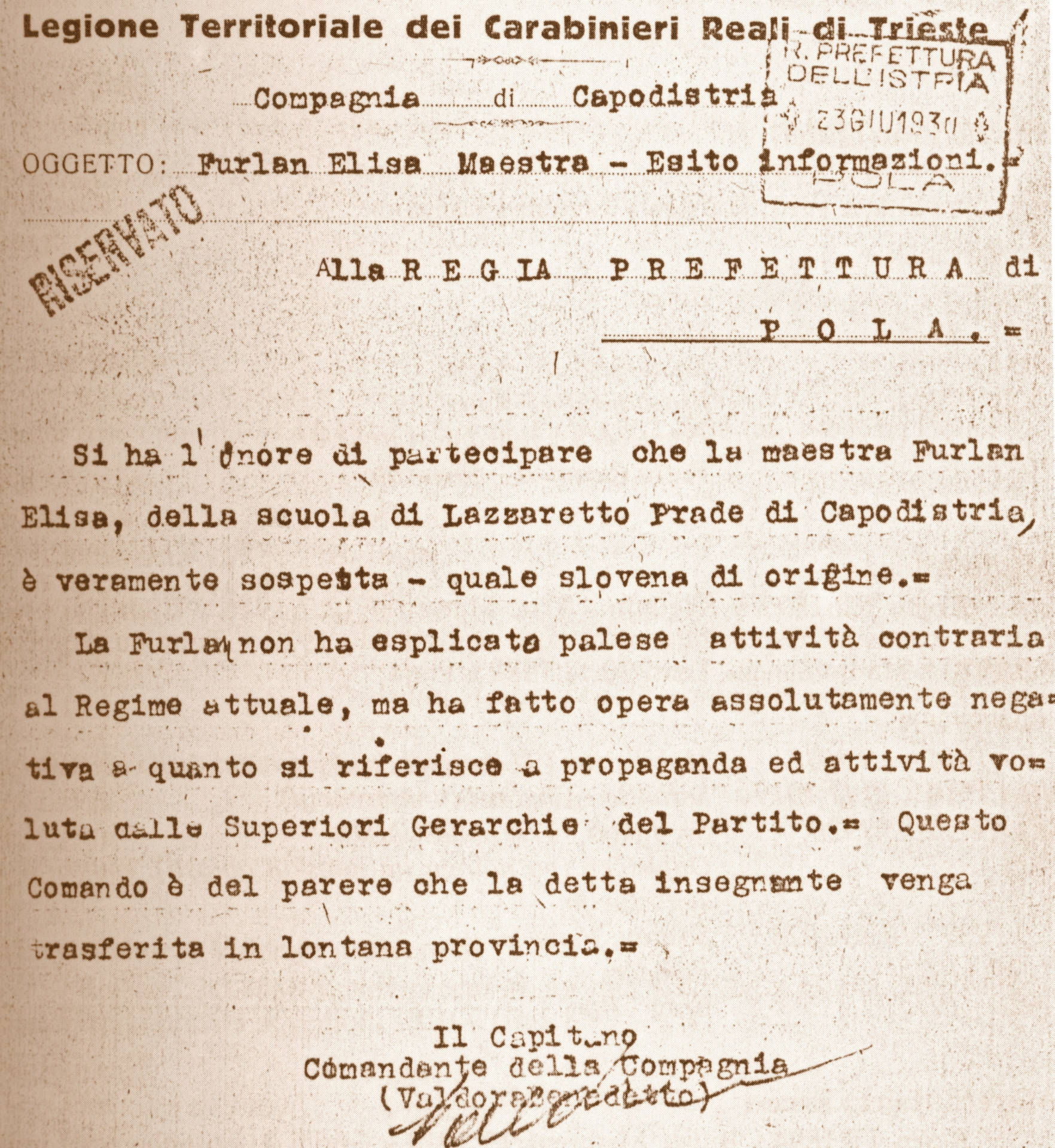 The carabinieri of Koper propose the removal of a schoolteacher named Furlan, “because she is of Slovene origin and therefore suspect”.
The carabinieri of Koper propose the removal of a schoolteacher named Furlan, “because she is of Slovene origin and therefore suspect”.

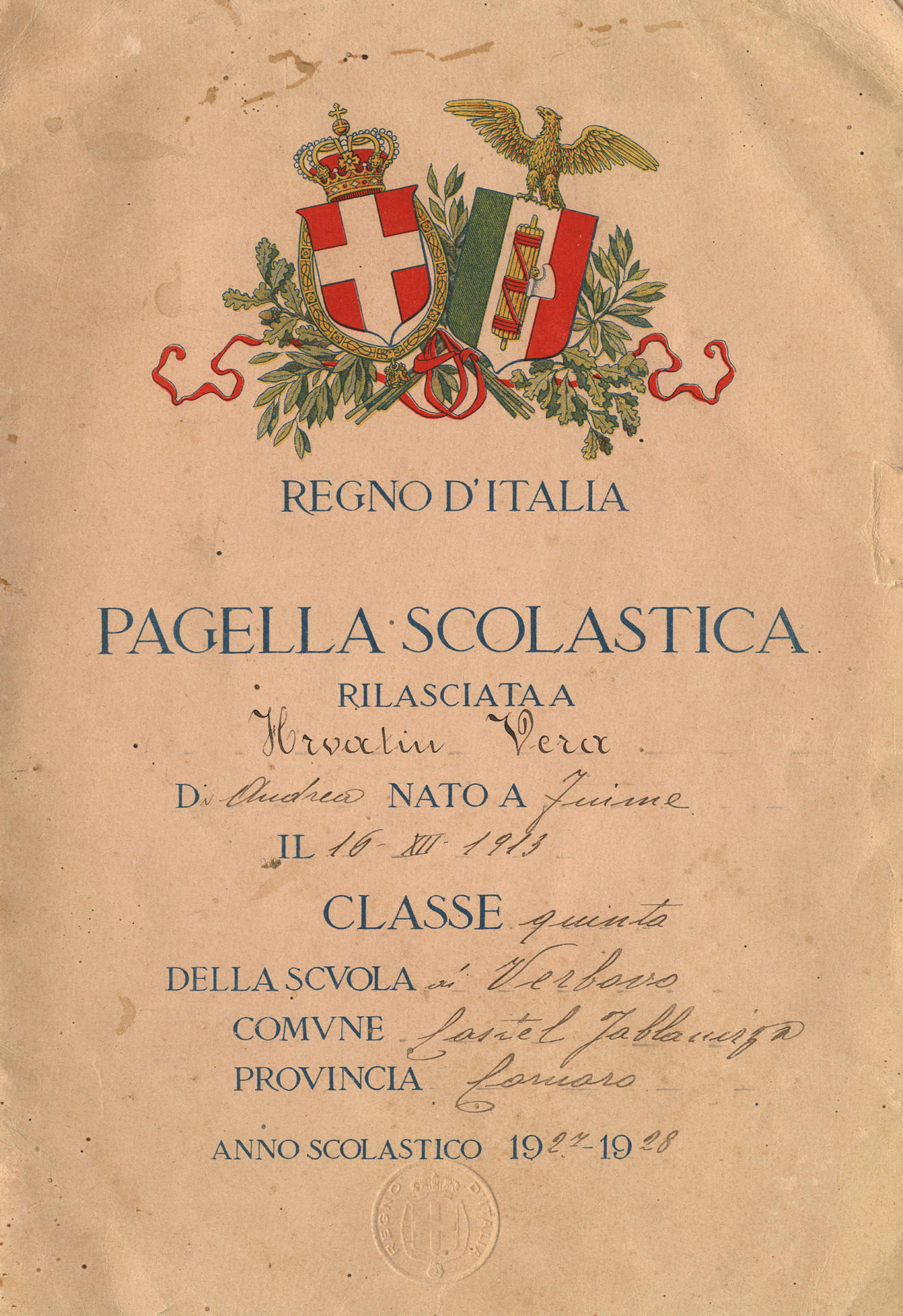
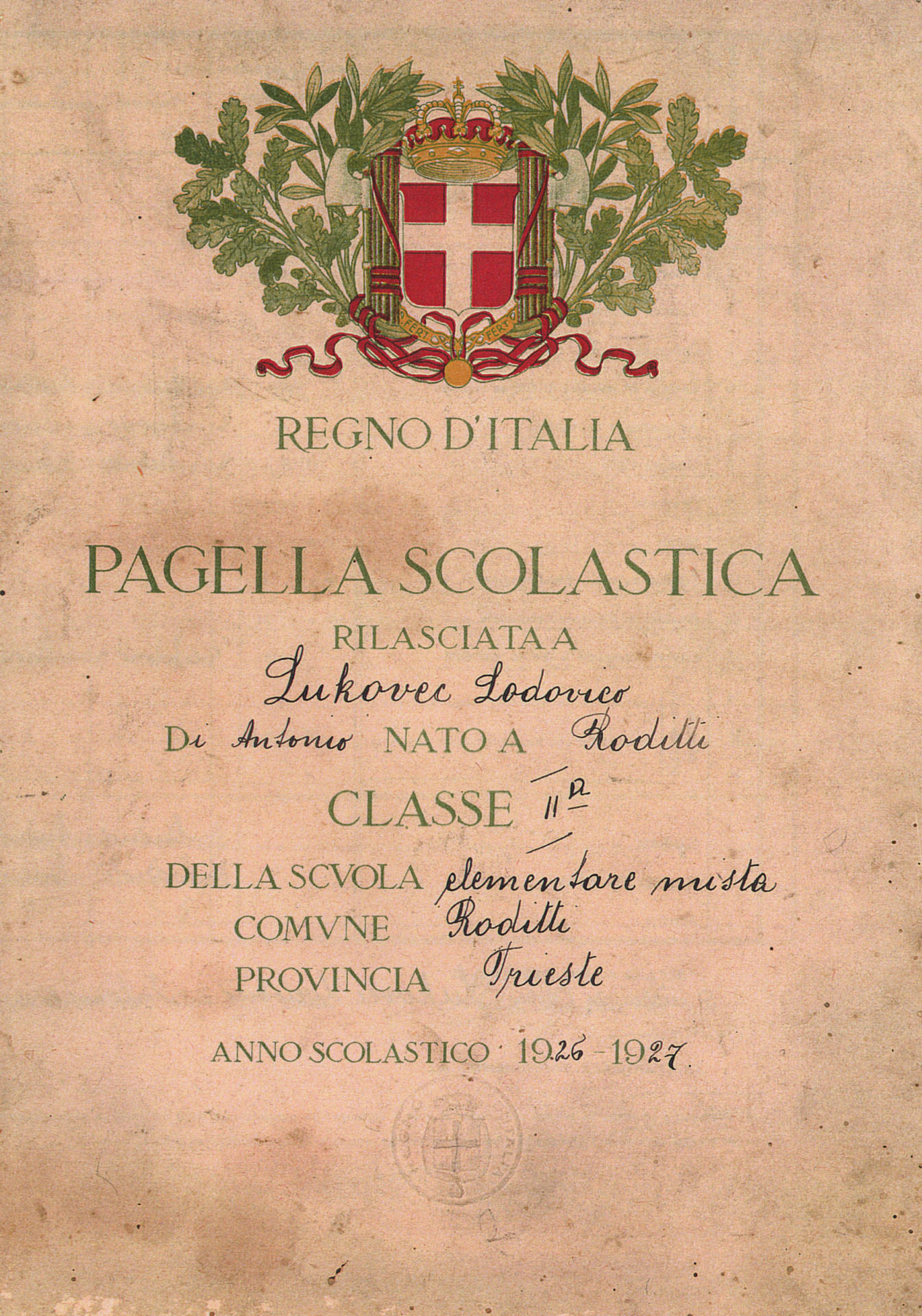
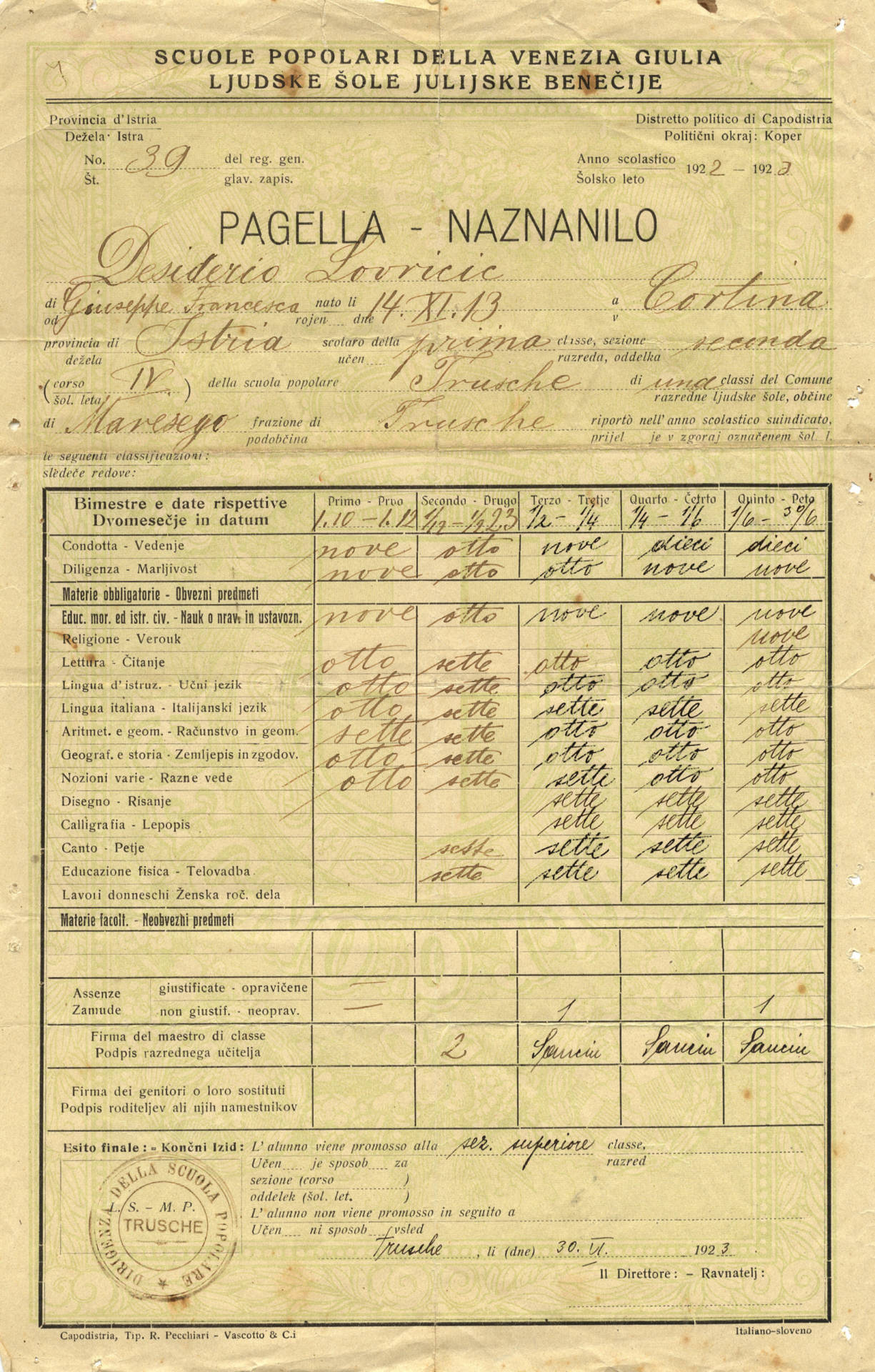
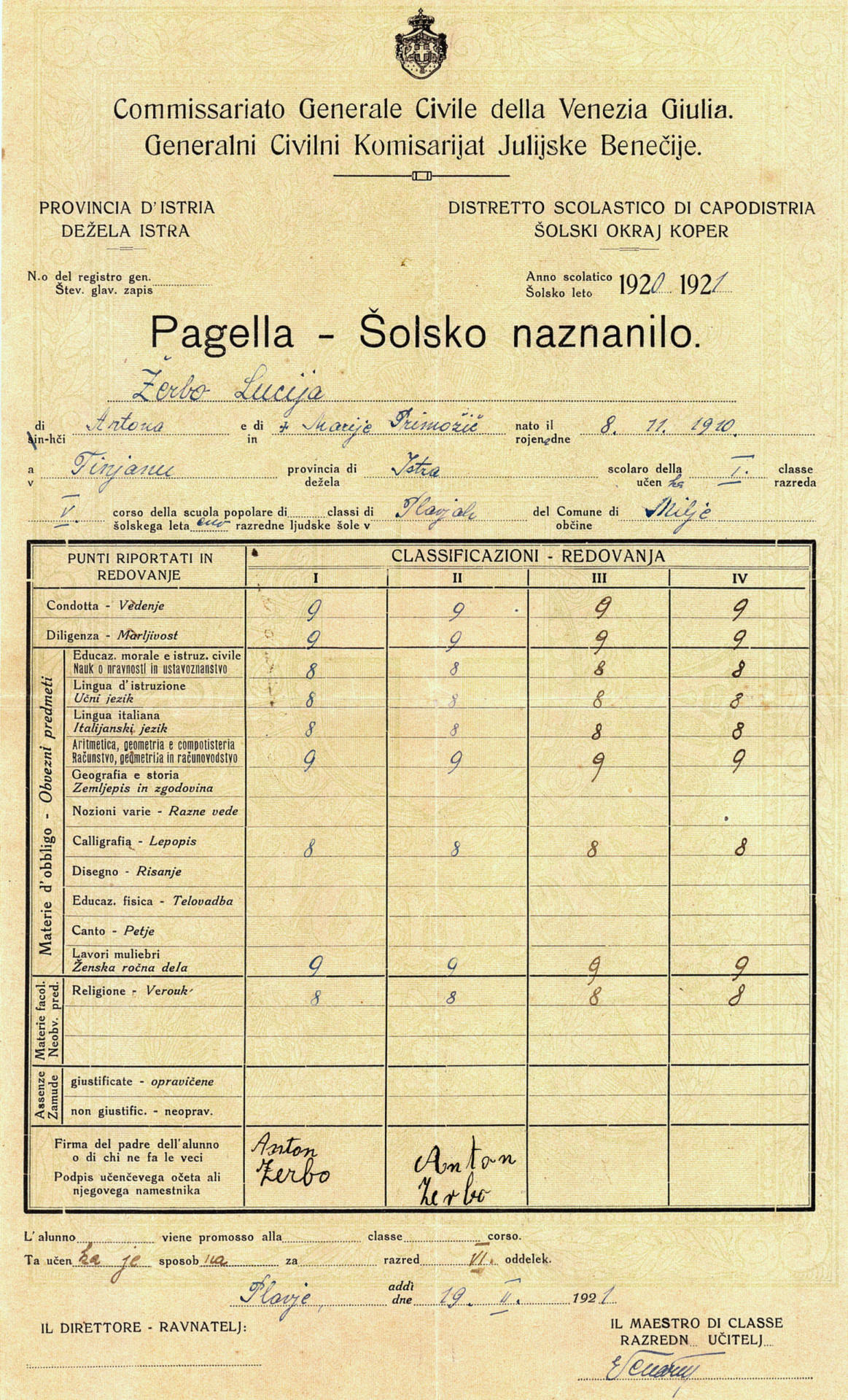
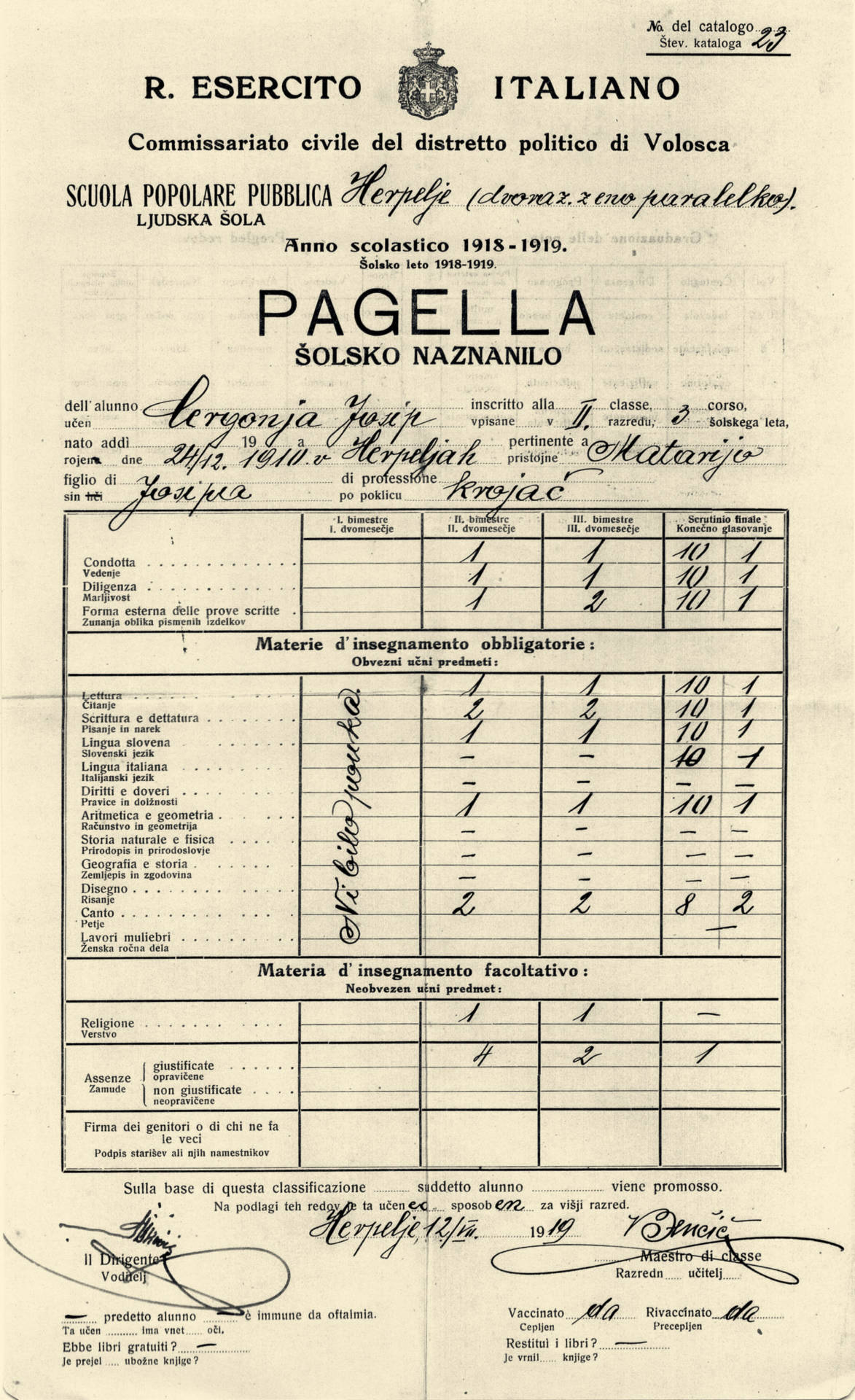
Political and pre-military education
The Fascist Party even enrolled children in its organisations. The Opera Nazionale Balilla (ONB) was a cultural and recreational institution charged with implanting a sense of discipline in children, strengthening their physical fitness through sport and instilling in them a martial spirit through pre-military training. Children were divided by age and sex. Schoolchildren aged 6 to 14 were known as Balilla (boys) and Piccole Italiane (girls). Those aged 14 to 18 were Avanguardisti (boys) and Giovani Italiane (girls). In the mid-1930s the ONB was absorbed into the Gioventù Italiana del Littorio (“Italian Youth of the Lictor”), which also included younger children, known as Figli della Lupa (“Children of the She-Wolf”). In this way, children were forcibly indoctrinated into Fascism. They were automatically made members when they enrolled at school. They wore uniforms. The authorities distributed free uniforms to Slovene children, since it was expected that their parents would not buy them. Many refused the uniform, although great pressure was placed on parents and children alike.
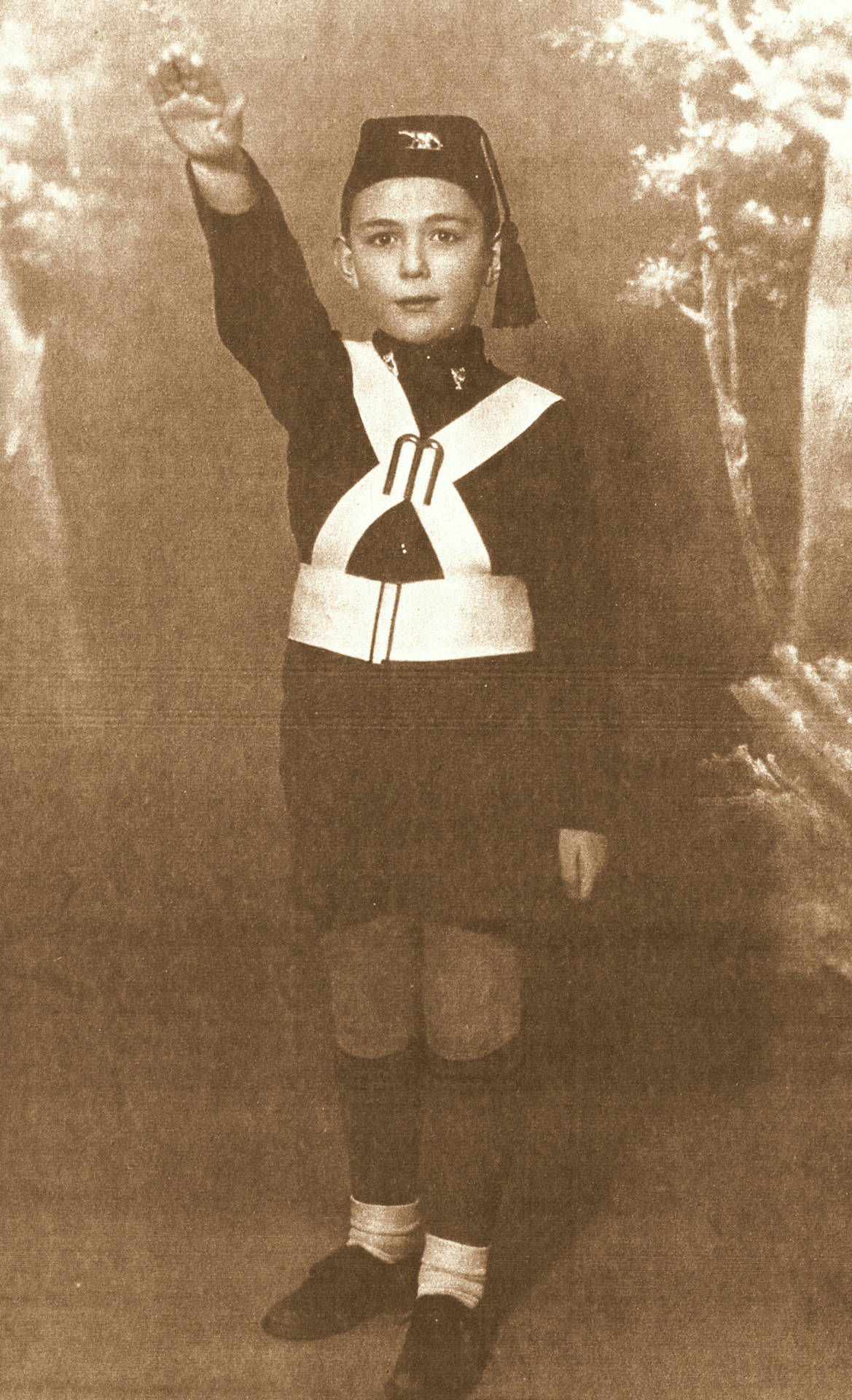 “Child of the She-Wolf” – the name given to the youngest members of the Fascist youth organisation (Gioventù Italiana del Littorio).
“Child of the She-Wolf” – the name given to the youngest members of the Fascist youth organisation (Gioventù Italiana del Littorio).
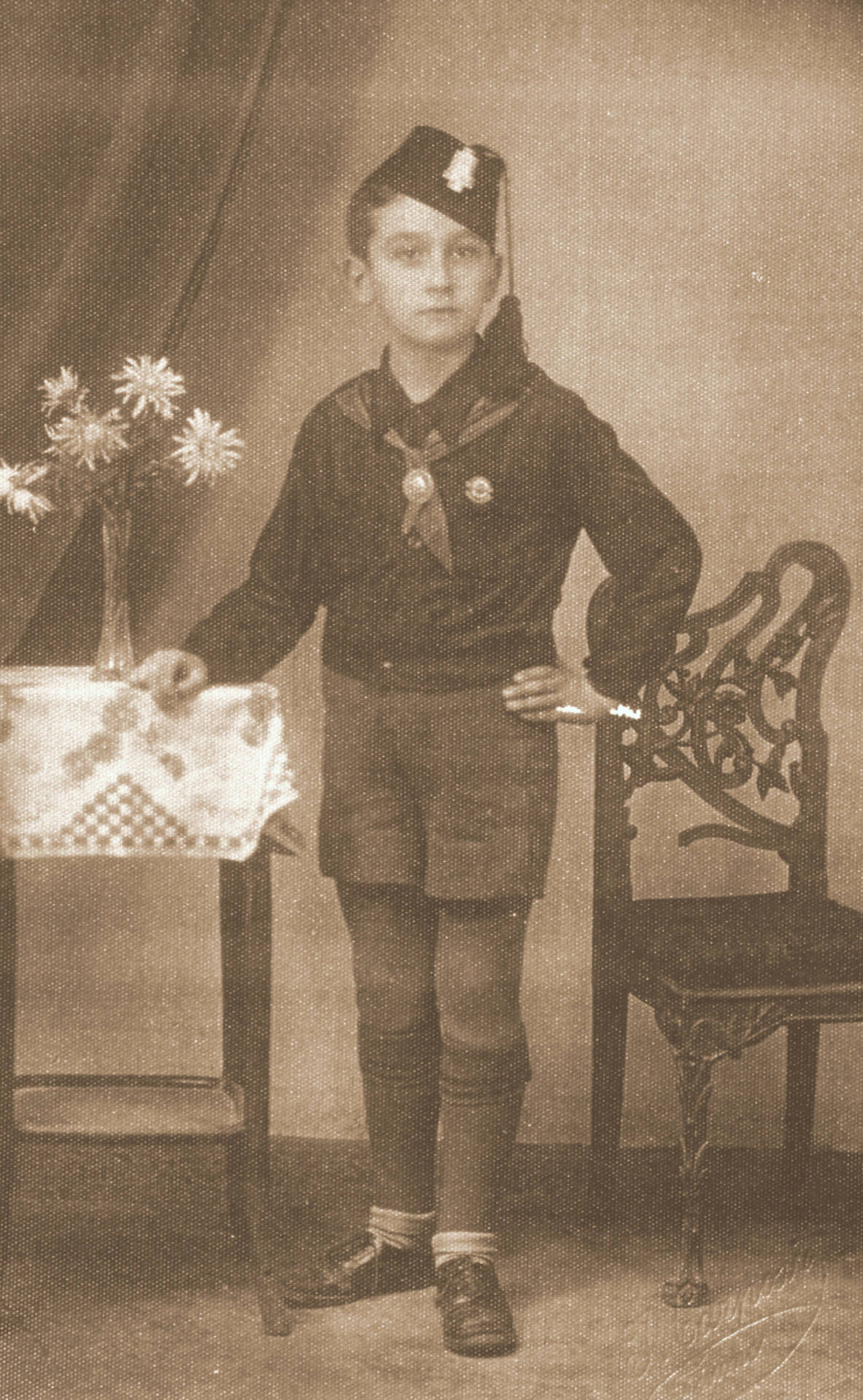 “Balilla” – a member of the Gioventù Italiana del Littorio.
“Balilla” – a member of the Gioventù Italiana del Littorio.
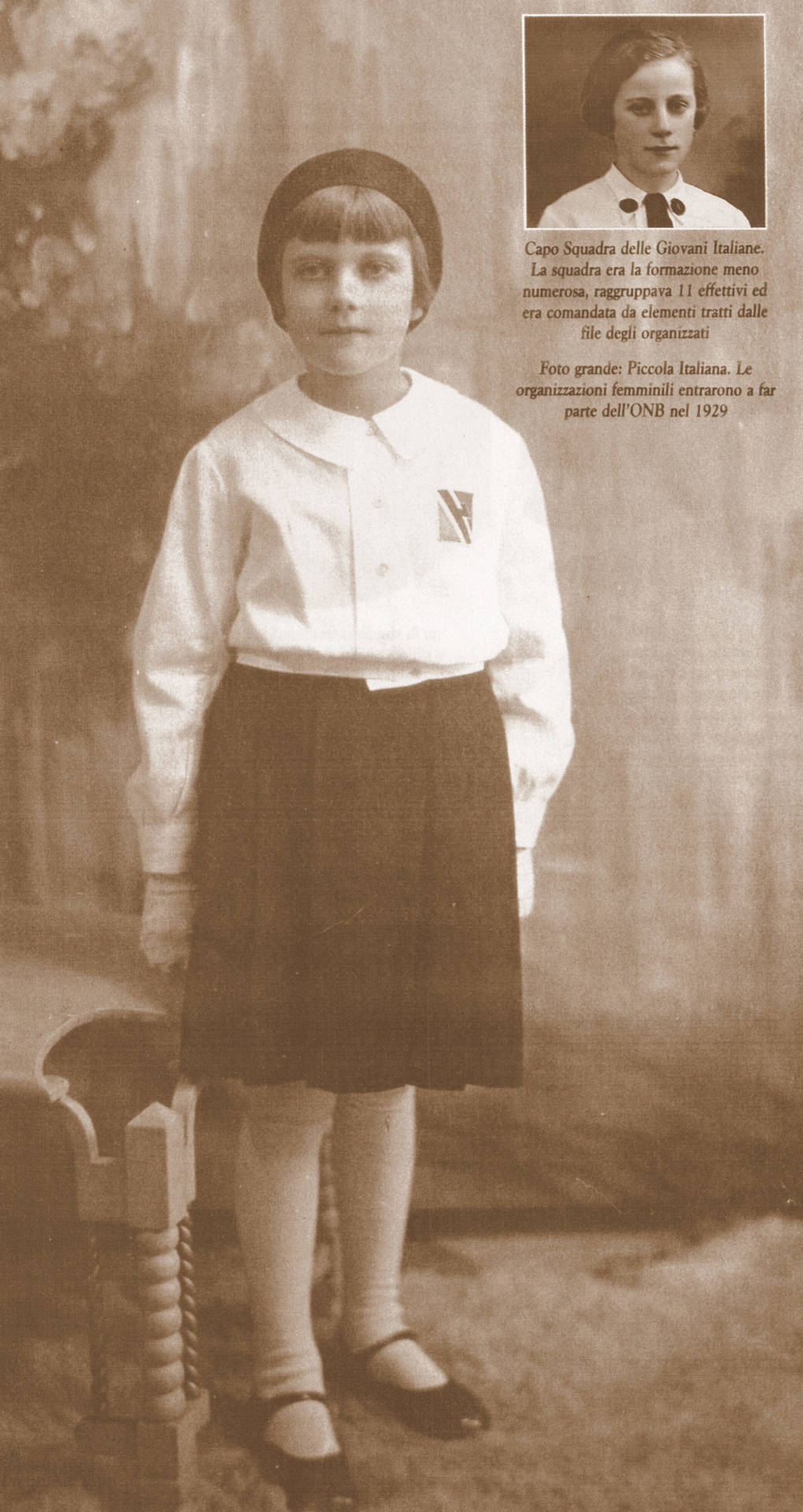 “Piccola Italiana”. Women’s organisations became part of the ONB in 1929.
“Piccola Italiana”. Women’s organisations became part of the ONB in 1929.
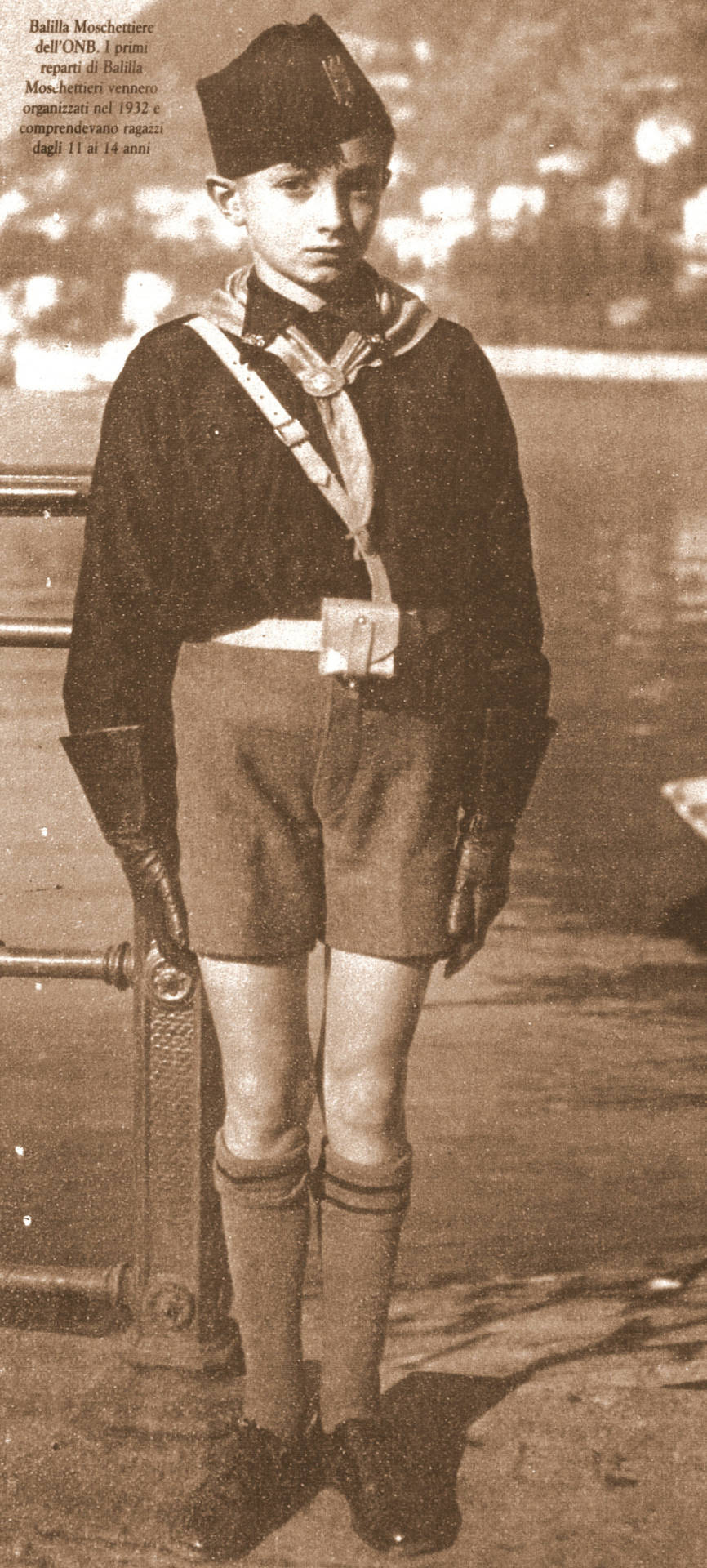 “Balilla Moschettiere”. Boys aged 11–14 joined the “Balilla Moschettieri” (Balilla Musketeers), formed in 1932.
“Balilla Moschettiere”. Boys aged 11–14 joined the “Balilla Moschettieri” (Balilla Musketeers), formed in 1932.
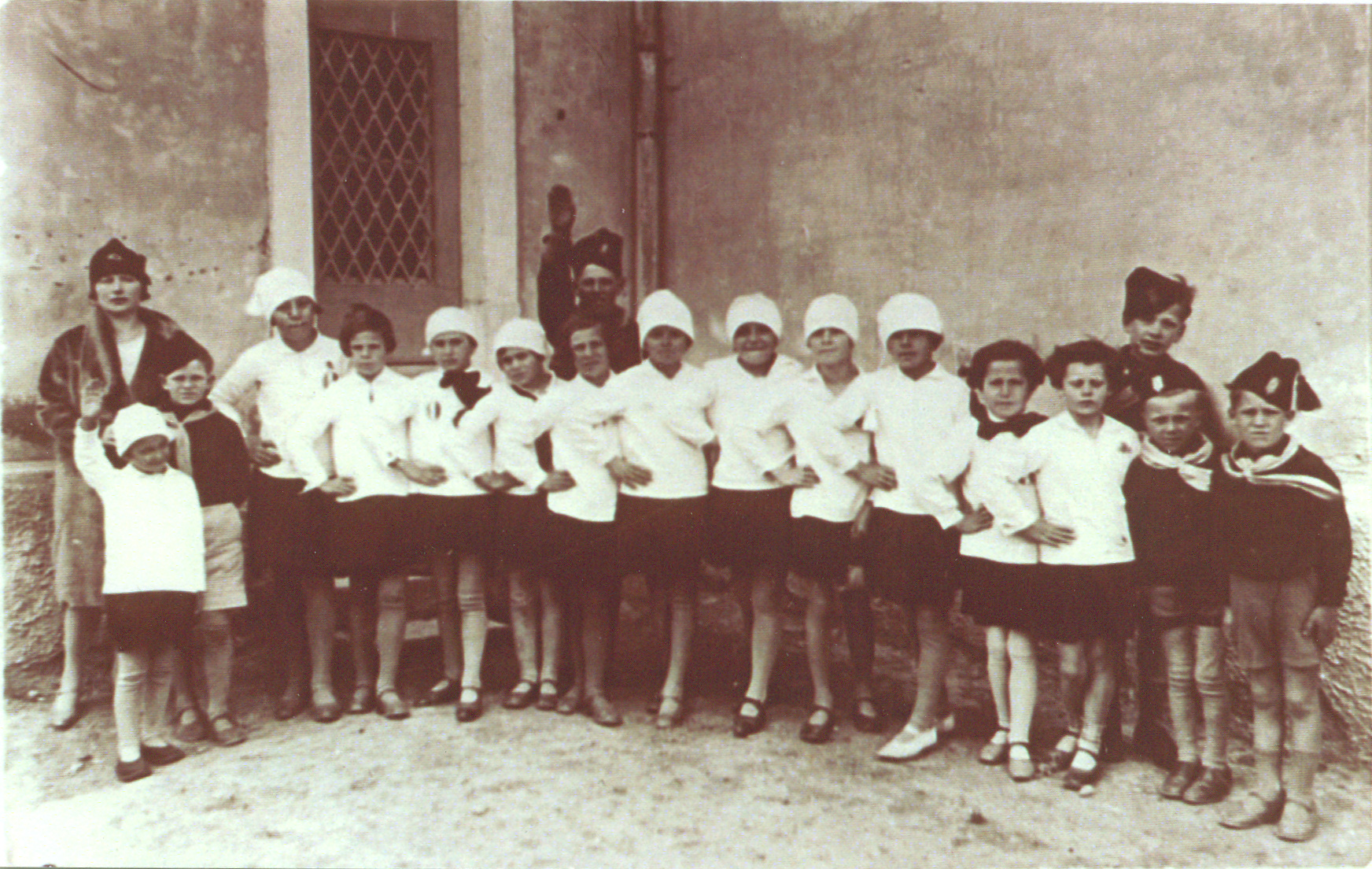
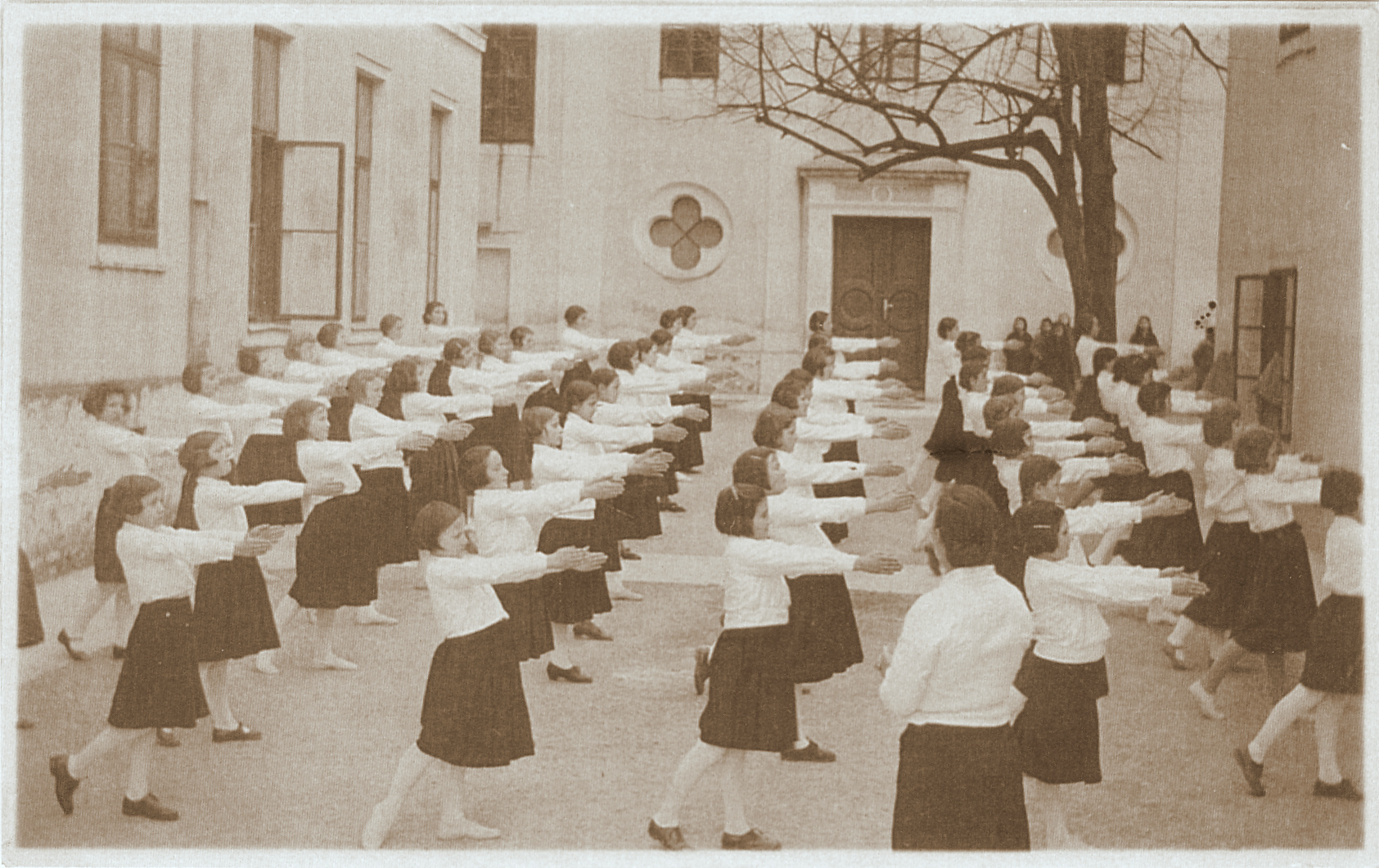 Strunjan, 1930 – second-year pupils dressed in their “Piccola Italiana” and “Balilla” uniforms.
Strunjan, 1930 – second-year pupils dressed in their “Piccola Italiana” and “Balilla” uniforms.
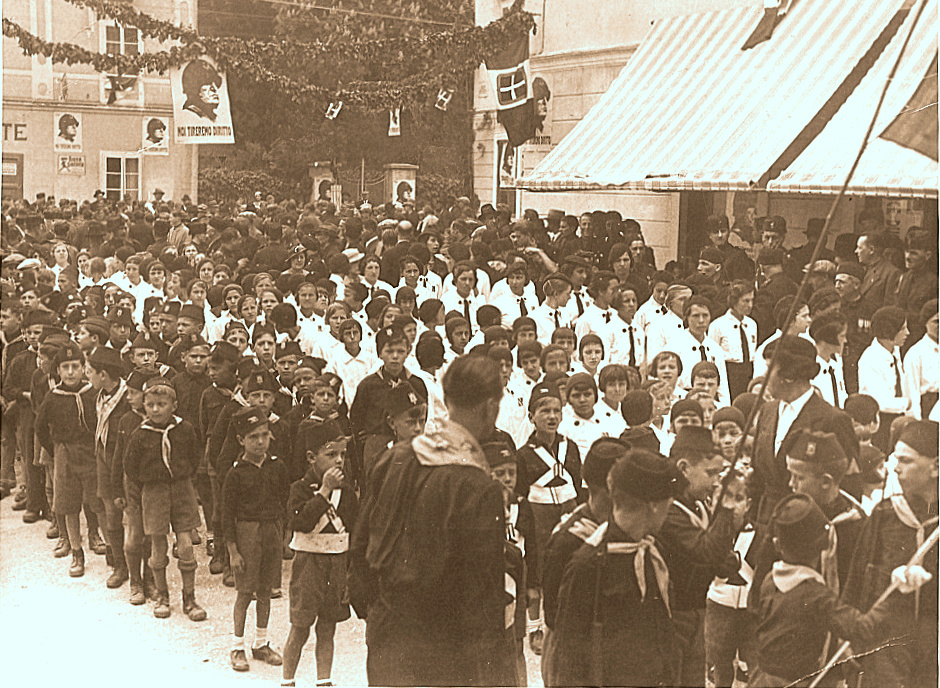 Convent school in Trnovo, 1936 – “Piccole Italiane” doing gymnastics.
Convent school in Trnovo, 1936 – “Piccole Italiane” doing gymnastics.
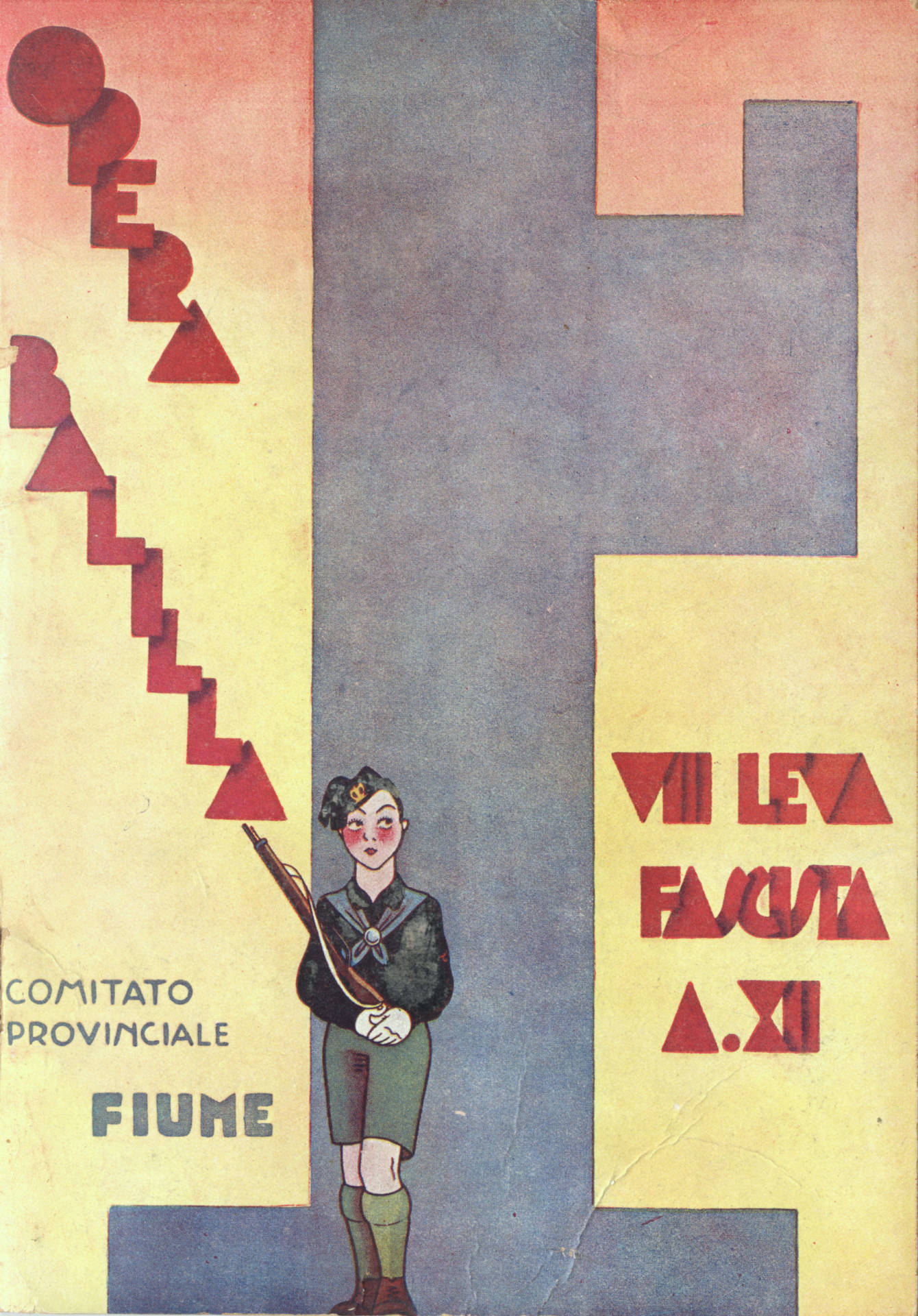 Sežana, 1930s. Schoolchildren were required to attend major events in their uniforms.
Sežana, 1930s. Schoolchildren were required to attend major events in their uniforms.
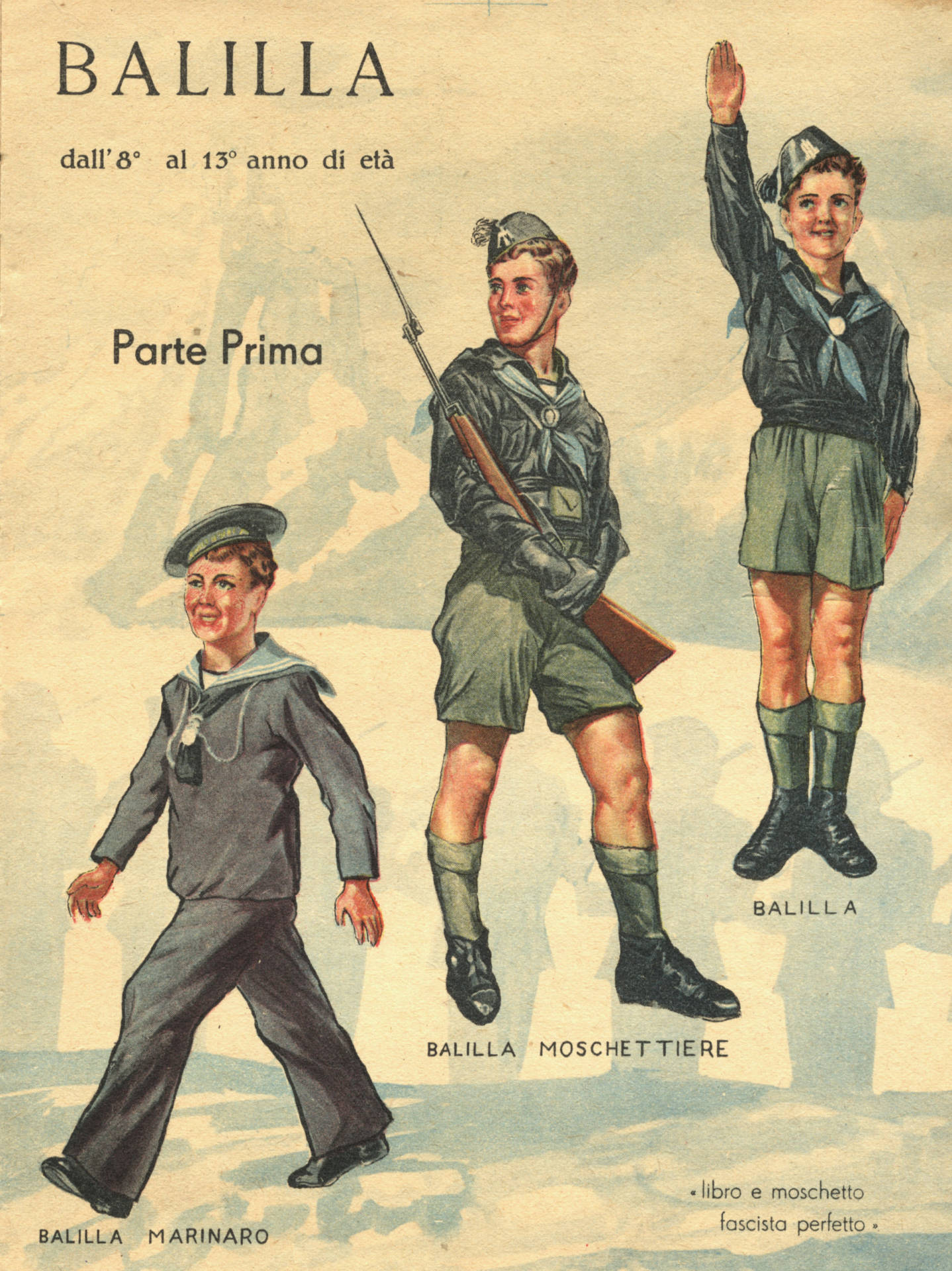 Young men were organised in military fashion. Boys and youths were issued with a “pre-military” service book and were obliged to undergo “pre-military” training.
Young men were organised in military fashion. Boys and youths were issued with a “pre-military” service book and were obliged to undergo “pre-military” training.
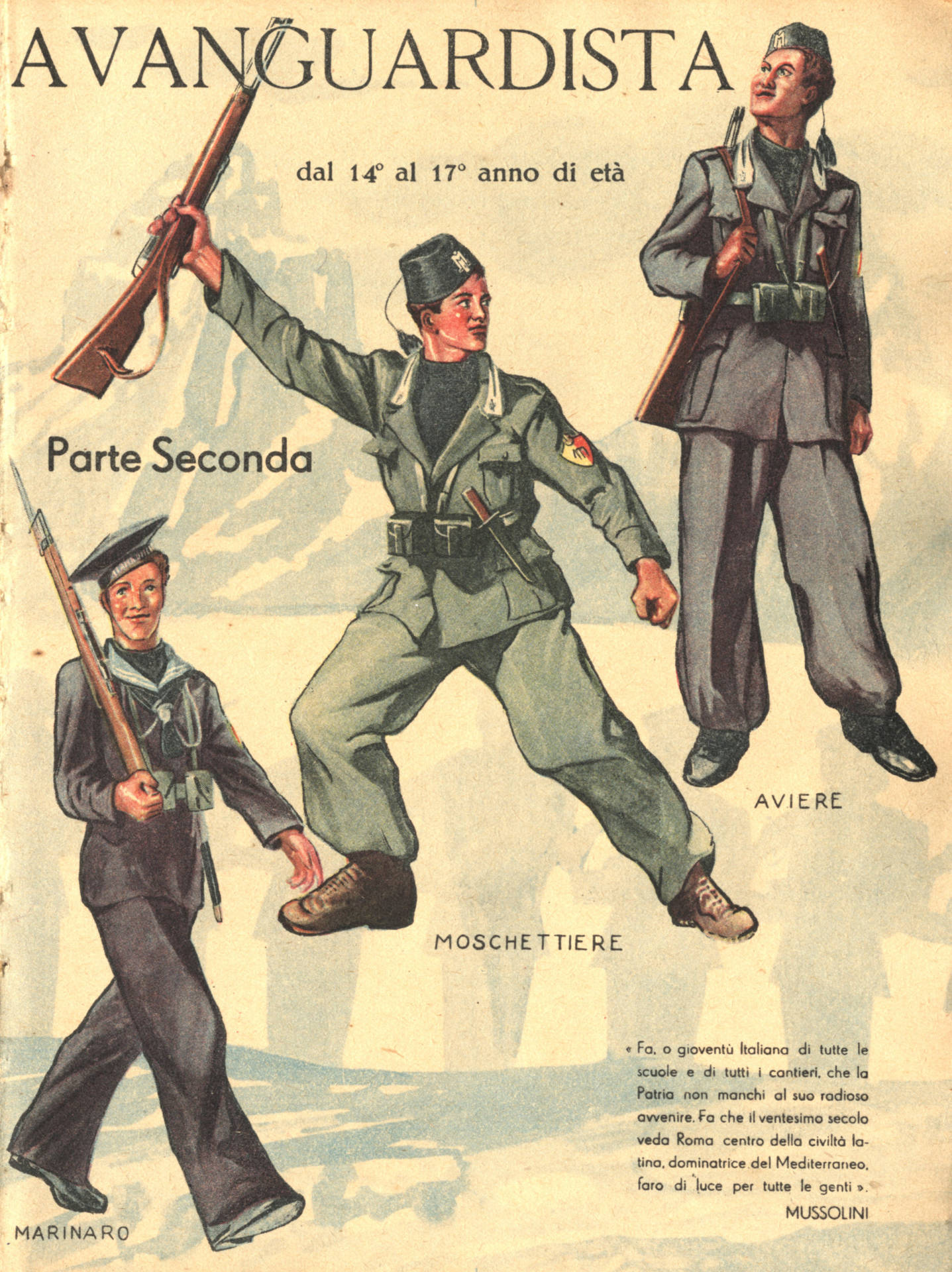 Young men were organised in military fashion. Boys and youths were issued with a “pre-military” service book and were obliged to undergo “pre-military” training.
Young men were organised in military fashion. Boys and youths were issued with a “pre-military” service book and were obliged to undergo “pre-military” training.
